
Deutsch-Chinesische Enzyklopädie, 德汉百科

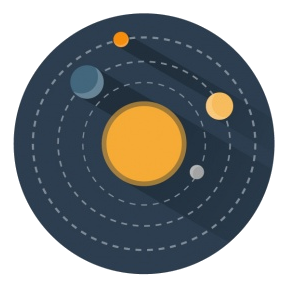 Astronomy
Astronomy

 History
History
 N 2000 - 2100 AD
N 2000 - 2100 AD

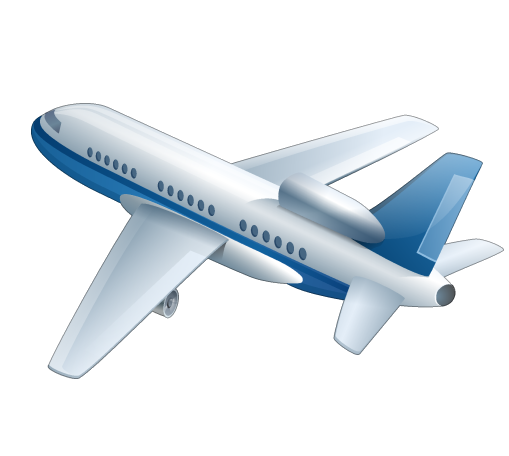
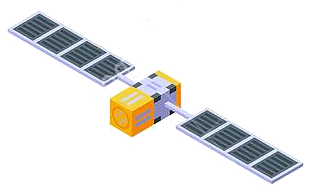
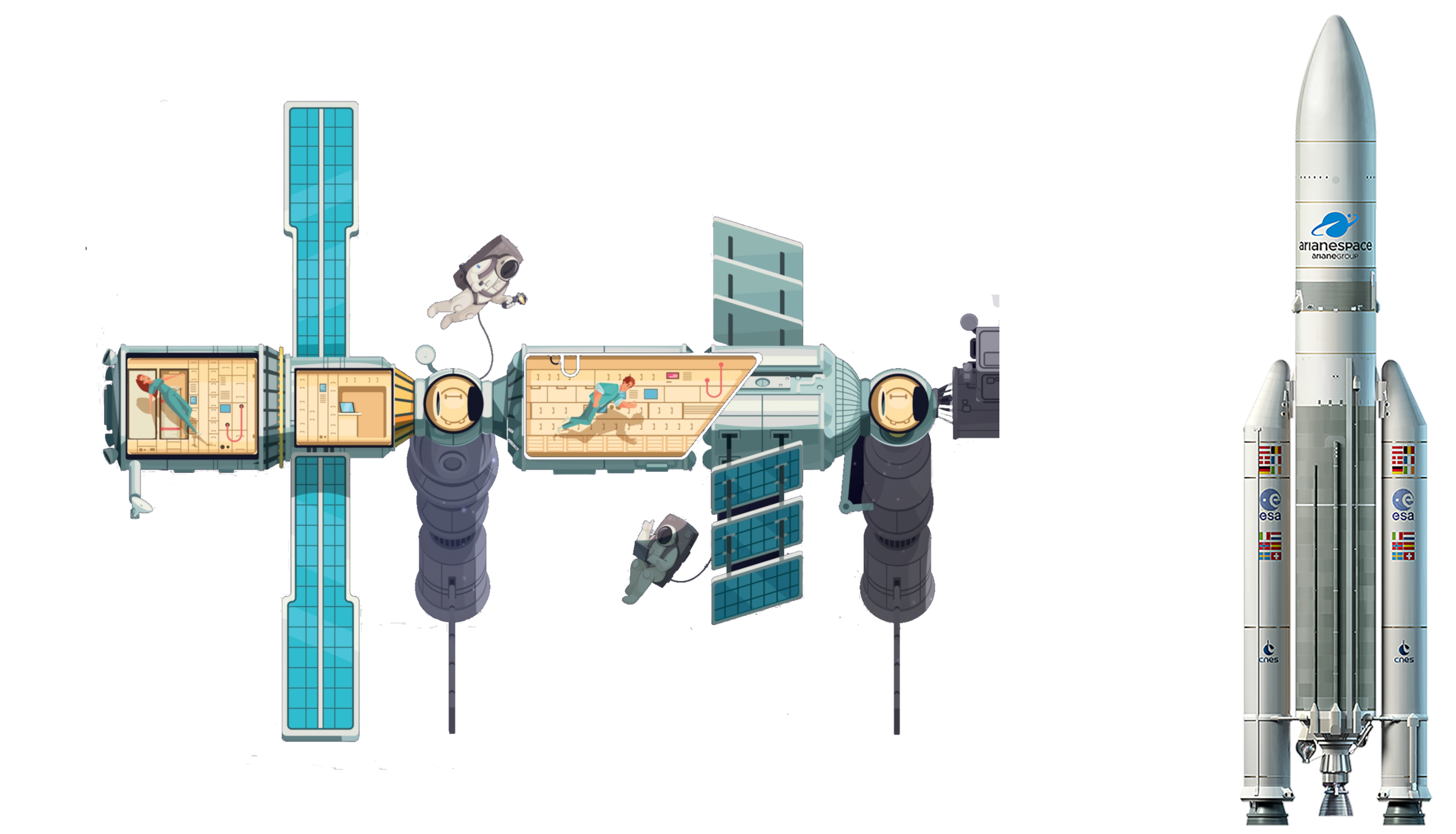 Aerospace
Aerospace
 Spacecraft
Spacecraft



 Aerospace
Aerospace
 Space Telescope/Space Observatory
Space Telescope/Space Observatory



 Aerospace
Aerospace
 Solar Mission
Solar Mission

 Science and technology
Science and technology
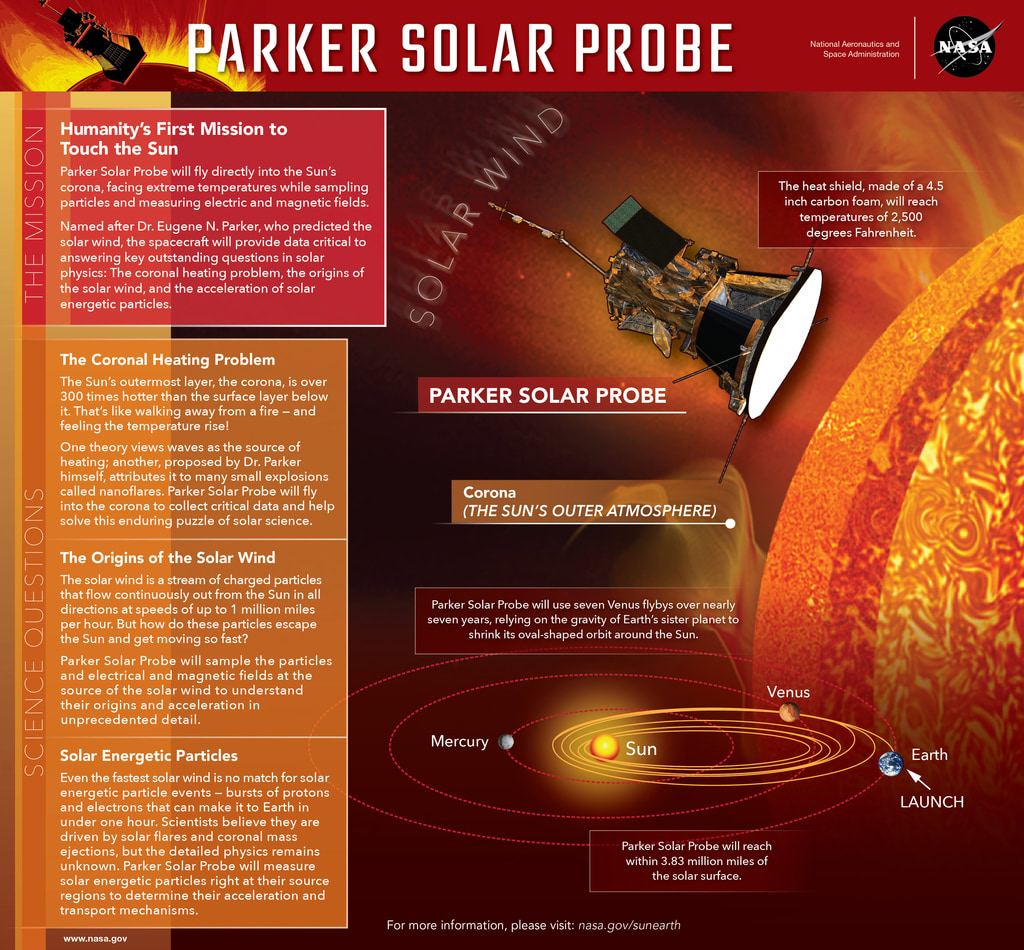
派克太阳探测器(英语:Parker Solar Probe,缩写:PSP)又译帕克太阳探测器,简称派克号或帕克号,旧称太阳探测器(Solar Probe)或太阳探测器 +(Solar Probe Plus 或 Solar Probe+)[8],是NASA于2018年发射的无人航天器,其任务是反复的探测和观察太阳的外日冕[3][9][6]。它将在2025年最接近太阳,与太阳中心距离仅有9.86太阳半径(690万公里或430万英里)[10][11],届时的速度高达690,000 km/h(430,000 mph),或是光速的0.064%[10][12]。
这个项目在2009财政年度宣布,该项目的费用为15亿美元。由约翰·霍普金斯大学 应用物理实验室设计和制造的这艘航天器[13]于2018年8月12日发射[2]。它以芝加哥大学名誉教授,物理学家尤金·派克的名字命名,以表彰他对太阳物理学的贡献;这是NASA首次以在世人物的名字作为任务的正式名称[14]。
Parker Solar Probe (vormals Solar Probe Plus) ist eine Raumsonde der NASA zur Erforschung der Sonne, insbesondere ihrer äußersten Atmosphärenschicht, der Korona. Die Raumsonde startete am 12. August 2018; sie soll am 24. Dezember 2024 erstmals ihren sonnennächsten Punkt (Perihel) erreichen.[3] Benannt wurde die Sonde nach dem US-amerikanischen Astrophysiker Eugene N. Parker, der den Begriff „solar wind“ (Sonnenwind) prägte.

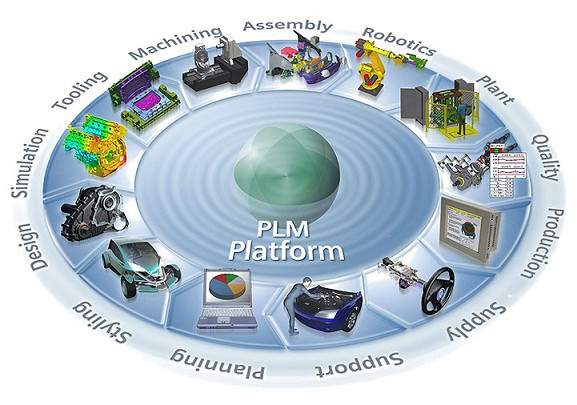
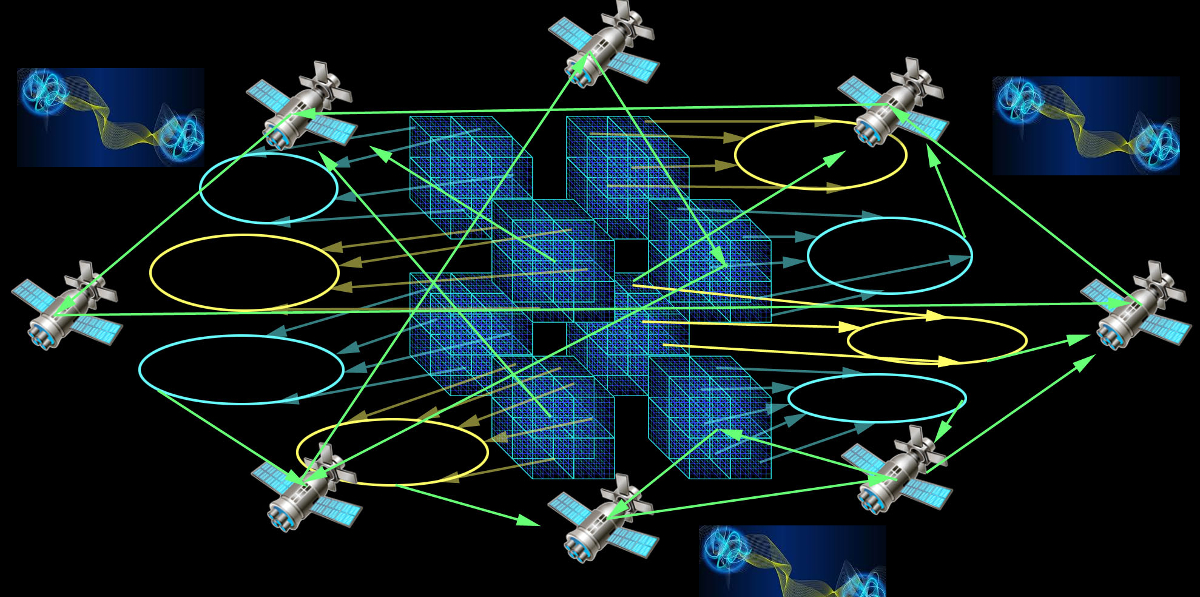
量子网络(英语:quantum network),是指在多个通信节点间,利用量子密钥分发进行安全通信的网络。各节点间产生的量子密钥可以对传统的语音、图像以及数字多媒体等通信数据进行加密和解密。由于量子通信线路无法通过挂接旁路窃听或拦截窃听,只要被窃听就会让量子态发生变化从而改变通信内容被侦知,从而实现安全的通信。
Unter einem Quantennetzwerk (manchmal auch Quanteninternet[1]) versteht man die Verbindung von Quanteninformationsträgern (Quantenknoten) mittels Quantenkanälen.
Da sich Quanteninformation (z. B. Qubits) aufgrund des No-Cloning-Theorems nicht kopieren lässt, ist eine Informationsübertragung wie in einem klassischen Netzwerk nicht möglich. Vielmehr muss ein Transfer des Quantenzustandes von einem zum anderen Knoten erfolgen. Eine Möglichkeit dies zu erreichen ist die Verwendung von Quantenteleportation. Ist die Übertragungsstrecke so groß, dass Pfadverluste eine Rolle spielen, bietet sich das Schema des Quantenrepeaters an.
Sollen beliebige Verbindungen zwischen verschiedenen Orten auf Basis der Quantenkryptographie aufgebaut werden (Long-Distance Quantum Communication [2]), wird ein Netzwerk an Repeaterstationen benötigt, das mit der Infrastruktur des heutigen Internet verglichen werden kann. Ein solches Quantennetzwerk ist noch weit entfernt vom alltäglichen Einsatz; die dafür benötigten Bausteine wurden aber bereits international als Prototypen in Labors implementiert.

 Energy resource
Energy resource

 Energy resource
Energy resource
 Nuclear power plants
Nuclear power plants

 History
History

 History
History
 N 2000 - 2100 AD
N 2000 - 2100 AD

 Science and technology
Science and technology

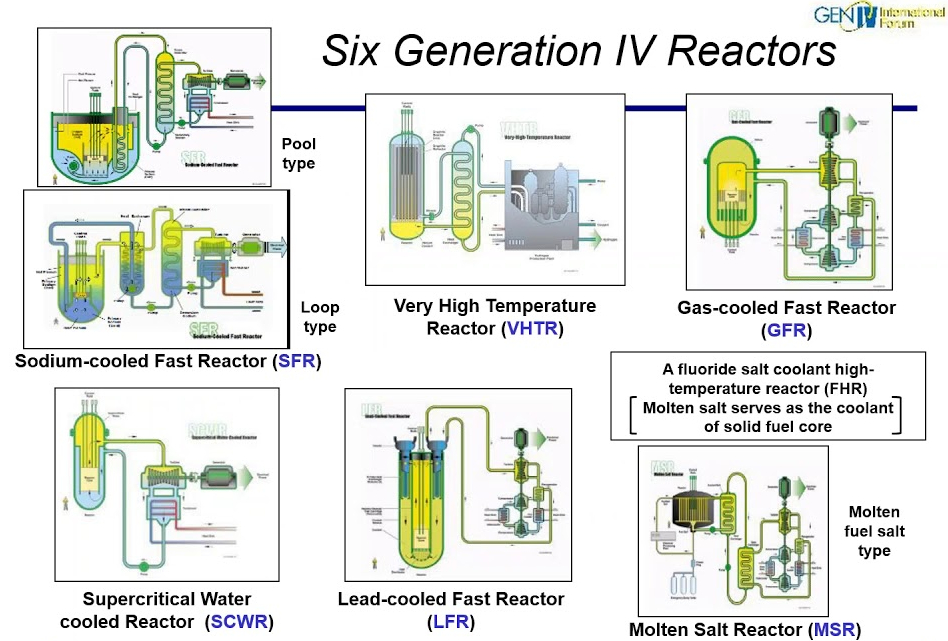
第四代反应炉(英语:Generation IV reactors,缩写:Gen IV)是一系列研究中的理论反应炉设计,其设计特征为:核能的可持续利用、经济性、安全与可靠性及防扩散与实物保护。
除了BN-1200反应炉,多数方案被认为在2030-2040年前不可能付诸商业运转,高温气冷堆技术方案的石岛湾核电站预计2017年并网发电,拖延至2021年并网发电。目前商转中的反应炉大多是第二代反应炉、以及只有十几个第三代反应炉(2014年),绝大部分的第一代系统已退役。
Bei den Reaktoren der vierten Generation (englisch: Generation IV reactors, Abkürzung: Gen IV) handelt es sich um eine Reihe theoretischer Reaktorkonzepte, die im Hinblick auf die nachhaltige Nutzung der Kernenergie, die Wirtschaftlichkeit, die Sicherheit und Zuverlässigkeit sowie die Verbreitungssicherheit und den physischen Schutz untersucht werden.
Mit Ausnahme des BN-1200-Reaktors wird davon ausgegangen, dass die meisten Optionen nicht vor 2030-2040 kommerziell genutzt werden können, wobei der Netzanschluss des Kernkraftwerks Shidao Bay für die Option der gasgekühlten Hochtemperaturreaktortechnologie für 2017 erwartet wird und sich bis 2021 verzögert. Bei den meisten Reaktoren, die sich derzeit in der kommerziellen Umrüstung befinden, handelt es sich um Reaktoren der Generation II sowie um nur ein Dutzend Reaktoren der Generation III (2014), während die überwiegende Mehrheit der Systeme der Generation I bereits stillgelegt wurde.
| Type | Neutron Spectrum | Coolant | Temperature (°C) | Fuel Cycle | Size (MW) | Example developers |
|---|---|---|---|---|---|---|
| VHTR | Thermal | Helium | 900–1000 | Open | 250–300 | JAEA (HTTR), Tsinghua University (HTR-10), Tsinghua University & China Nuclear Engineering Corporation (HTR-PM),[45] X-energy[46] |
| SFR | Fast | Sodium | 550 | Closed | 30–150, 300–1500, 1000–2000 | TerraPower (Natrium, TWR), Toshiba (4S), GE Hitachi Nuclear Energy (PRISM), OKBM Afrikantov (BN-1200), China National Nuclear Corporation (CNNC) (CFR-600),[47] Indira Gandhi Centre for Atomic Research (Prototype Fast Breeder Reactor) |
| SCWR | Thermal or fast | Water | 510–625 | Open or closed | 300–700, 1000–1500 | |
| GFR | Fast | Helium | 850 | Closed | 1200 | Energy Multiplier Module |
| LFR | Fast | Lead | 480–800 | Closed | 20–180, 300–1200, 600–1000 | BREST-OD-300, MYRRHA, SEALER[48] |
| MSR | Fast or thermal | Fluoride or chloride salts | 700–800 | Closed | 250–1000 | Seaborg Technologies, TerraPower, Elysium Industries, Moltex Energy, Flibe Energy (LFTR), Copenhagen Atomics, Thorium Tech Solution (FUJI MSR), Terrestrial Energy (IMSR), Southern Company,[46] ThorCon |
 Atomic bomb
Atomic bomb
 BRICS summit
BRICS summit
 Commonwealth of Nations
Commonwealth of Nations

 History
History

 History
History
 M 1500 - 2000 AD
M 1500 - 2000 AD

 History
History

 History
History
 N 2000 - 2100 AD
N 2000 - 2100 AD
 History of India
History of India
 India
India




 Military, defense and equipment
Military, defense and equipment
 Nuclear Weapon
Nuclear Weapon

 Party and government
Party and government
 Group of the twenty most important industrial and emerging countries
Group of the twenty most important industrial and emerging countries

 Party and government
Party and government
 BRICS
BRICS
 Silk road
Silk road
 Shanghai Cooperation Organization
Shanghai Cooperation Organization

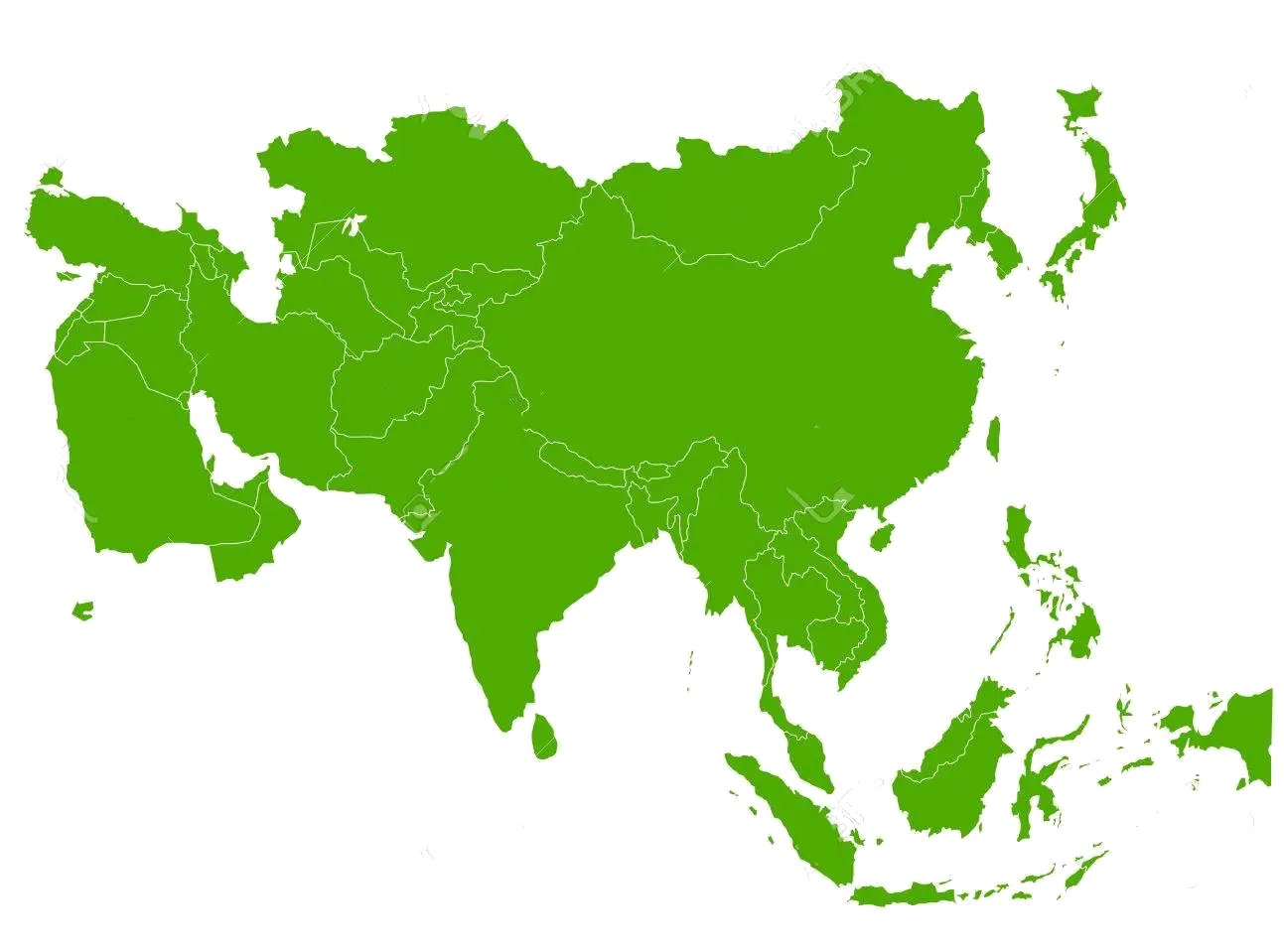 States of Asia
States of Asia

印度共和国(印地语:भारत गणराज्य,Bhārat Ganarājya;英语:Republic of India),通称印度(印地语:भारत;英语:India),是位于南亚印度次大陆上的国家,印度面积位列世界第七,印度人口众多,位列世界第二,截至2018年1月印度拥有人口13.4亿,仅次于中国人口的13.8亿,人口成长速度比中国还快,预计近年将交叉。是亚洲第二大也是南亚最大的国家,面积328万平方公里(实际管辖),同时也是世界第三大(购买力平价/PPP)经济体。
印度并非单一民族及文化的国家。印度的民族和种族非常之多,有“民族大熔炉”之称,其中印度斯坦族占印度总人口的大约一半,是印度最大的民族。印度各个民族都拥有各自的语言,仅宪法承认的官方语言就有22种之多,其中印地语和英语被定为印度共和国的联邦官方语言[5],并且法院裁定印度没有国语。[9][10]英语作为共同语言使用在印度非常流行,尤其在南印地位甚至高于印地语,但受限于教育水准,普通民众普遍不精通英语。另外,印度也是一个多宗教多信仰的国家,世界4大宗教其中的佛教和印度教都源自印度。大部分印度人信仰印度教。伊斯兰教在印度也有大量信徒,是印度的第二大宗教,信教者约占印度的14.6%(截至2011年,共有约1亿7千7百万人)。伊斯兰教是在公元8世纪随着阿拉伯帝国的扩张而传播到印度的。公元10世纪后,北印的大多数王朝统治者都是信奉伊斯兰教的,特别是莫卧儿王朝。印度也是众多正式和非正式的多边国际组织的成员,包括世界贸易组织、英联邦、金砖五国、南亚区域合作联盟和不结盟运动等。
以耕种农业、城市手工业、服务业以及其支撑产业为主的部分行业已经相对取得了进展。除了民族文化与北方地形的丰富使印度旅游业颇受欢迎之外,由于时差,大批能说英语的人才也投入外包行业(即是外国企业把客户咨询,电话答录等等服务转移到印度)。另一方面,宝莱坞电影的文化输出在英语圈乃至全球的影响力不亚于世界主流。同时印度还是很多专利过期药物的生产地,以低价格提供可靠的医疗。近年来,印度政府还大力投资本国高等教育,以利于在科学上与国际接轨,例如自主太空研究、南亚半岛生态研究等等。印度最重要的贸易伙伴是美国、欧盟、日本、中国和阿拉伯联合酋长国。
Indien ist ein Staat in Südasien, der den größten Teil des indischen Subkontinents umfasst. Indien ist eine Bundesrepublik, die von 29 Bundesstaaten gebildet wird und außerdem sieben bundesunmittelbare Gebiete umfasst. Der Eigenname der Republik lautet in den beiden landesweit gültigen Amtssprachen Bharat Ganarajya (Hindi) und Republic of India (Englisch). Die moderne demokratische und säkulare indische Republik besteht seit 1949 und seit 1950 gilt die Verfassung Indiens.
Der Himalaya bildet die natürliche Nordgrenze Indiens, im Süden umschließt der Indische Ozean das Staatsgebiet. Indien grenzt an Pakistan, das chinesische Autonome Gebiet Tibet, Nepal, Bhutan, Myanmar (Birma) und Bangladesch. Weitere Nachbarstaaten im Indischen Ozean sind Sri Lanka und die Malediven. Hinsichtlich der Landesfläche ist Indien das flächenmäßig siebtgrößte Land der Erde.
Das Gebiet Indiens ist mindestens seit der bronzezeitlichen Indus-Hochkultur zivilisiert. Der indische Staat ist mit über 1,3 Milliarden Einwohnern (2016)[6] nach der Volksrepublik China (fast 1,4 Mrd.)[7] das zweitbevölkerungsreichste Land der Erde und somit die bevölkerungsreichste Demokratie der Welt.[8] Bei gleichbleibend hohem Bevölkerungswachstum könnte Indien schon im Jahr 2020 China überholen. Durch fortschreitende Modernisierung, Bildung, Wohlstand und Urbanisierung sinkt die Geburtenrate jedoch bereits. Hauptstadt Indiens ist Neu-Delhi, Teil der Metropole Delhi; weitere Ballungsräume sind auch Mumbai, Kalkutta, Chennai, Bangalore, Hyderabad, Ahmedabad und Pune.
Die indische Gesellschaft wird trotz verfassungsmäßiger Religionsfreiheit vom religiösen hierarchischen Kastensystem bestimmt. Die mit Abstand größte Religionsgruppe sind die Hindus, gefolgt von Muslimen, Christen und den historisch aus Indien stammenden Sikhs, Buddhisten und Jaina. Laut Index der menschlichen Entwicklung (HDI) erreicht Indien den Status „mittlere menschliche Entwicklung“ und Platz 131 von 187 weltweit (2016, im Vergleich erreicht die VR China Platz 90).[9] Wirtschaftlich gilt Indien als Schwellenland und gehört zu den O5- und BRICS-Staaten und der Gruppe der zwanzig wichtigsten Industrie- und Schwellenländer (G20). Indien ist trotz seines noch niedrigen Pro-Kopf-Einkommens bereits die drittgrößte bzw. sechstgrößte Wirtschaftsmacht der Welt (kaufkraftbereinigt bzw. nominell) und war 2015 erstmals die am schnellsten wachsende Volkswirtschaft der G20-Gruppe.
インドは、南アジアに位置し、インド洋の大半とインド亜大陸を領有する連邦共和制国家である。ヒンディー語の正式名称भारत गणराज्य(ラテン文字転写: Bhārat Gaṇarājya、バーラト・ガナラージヤ、英語: Republic of India)を日本語訳したインド共和国とも呼ばれる。
西から時計回りにパキスタン、中華人民共和国、ネパール、ブータン、バングラデシュ、ミャンマー、スリランカ、モルディブ、インドネシアに接しており、アラビア海とベンガル湾の二つの海湾に挟まれて、国内にガンジス川が流れている。首都はニューデリー、最大都市はムンバイ。
1947年にイギリスから独立。インダス文明に遡る古い歴史、世界第二位の人口を持つ。国花は蓮、国樹は印度菩提樹、国獣はベンガルトラ、国鳥はインドクジャク、国の遺産動物はインドゾウである。
インドは南アジア随一の面積と世界第2位の人口を持つ大国である。12億人を超える国民は、多様な民族、言語、宗教によって構成されている。連邦公用語はヒンディー語、他にインド憲法で公認されている言語が21あり主な言語だけで15を超えるため、インドの紙幣には17の言語が印刷されている。議会制民主主義国家であり、有権者数8億人と世界最大である[5]。州政府が一定の独立性を持っているため、各州に中央政府とは別に政府があり大臣がいる。
労働力人口の3分の2が農業に従事する一方、製造業とサービス業が急速に成長している。国民の識字率は74.04%である。ヒンドゥー教徒が最も多く、イスラム教、シーク教がこれに次ぐ。カースト制度による差別は憲法で禁止されているが、今でも農村部では影響は残っている。
アジア開発銀行はインドの中間層が向こう15年間で人口の7割に達するとしている[6]。
India (IAST: Bhārat), also known as the Republic of India (IAST: Bhārat Gaṇarājya),[18][e] is a country in South Asia. It is the seventh largest country by area and with more than 1.3 billion people, it is the second most populous country and the most populous democracy in the world. Bounded by the Indian Ocean on the south, the Arabian Sea on the southwest, and the Bay of Bengal on the southeast, it shares land borders with Pakistan to the west;[f] China, Nepal, and Bhutan to the northeast; and Bangladesh and Myanmar to the east. In the Indian Ocean, India is in the vicinity of Sri Lanka and the Maldives, while its Andaman and Nicobar Islands share a maritime border with Thailand and Indonesia.
The Indian subcontinent was home to the urban Indus Valley Civilisation of the 3rd millennium BCE. In the following millennium, the oldest scriptures associated with Hinduism began to be composed. Social stratification, based on caste, emerged in the first millennium BCE, and Buddhism and Jainism arose. Early political consolidations took place under the Maurya and Gupta empires; later peninsular Middle Kingdoms influenced cultures as far as Southeast Asia. In the medieval era, Judaism, Zoroastrianism, Christianity, and Islam arrived, and Sikhism emerged, all adding to the region's diverse culture. Much of the north fell to the Delhi Sultanate; the south was united under the Vijayanagara Empire. The economy expanded in the 17th century in the Mughal Empire. In the mid-18th century, the subcontinent came under British East India Company rule, and in the mid-19th under British crown rule. A nationalist movement emerged in the late 19th century, which later, under Mahatma Gandhi, was noted for nonviolent resistance and led to India's independence in 1947.
In 2017, the Indian economy was the world's sixth largest by nominal GDP[19] and third largest by purchasing power parity.[15] Following market-based economic reforms in 1991, India became one of the fastest-growing major economies and is considered a newly industrialised country. However, it continues to face the challenges of poverty, corruption, malnutrition, and inadequate public healthcare. A nuclear weapons state and regional power, it has the second largest standing army in the world and ranks fifth in military expenditure among nations. India is a federal republic governed under a parliamentary system and consists of 29 states and 7 union territories. A pluralistic, multilingual and multi-ethnic society, it is also home to a diversity of wildlife in a variety of protected habitats.
L'Inde, officiellement la république de l'Inde4, en hindi : भारत (Bhārat) et भारत गणराज्य (Bhārat Gaṇarājya), est un pays d'Asie du Sud qui occupe la majeure partie du sous-continent indien. Sa capitale est New Delhi. L'Inde est le deuxième pays le plus peuplé et le septième pays le plus grand du monde. Le littoral indien s'étend sur plus de sept mille kilomètres. Le pays a des frontières communes avec le Pakistan à l'ouest, la Chine, le Népal, et le Bhoutan au nord et au nord-est, le Bangladesh et la Birmanie à l'est. Sur l'océan Indien, l'Inde est à proximité des Maldives au sud-ouest, du Sri Lanka et de l'Indonésie au sud-est. L'Inde revendique également une frontière avec l'Afghanistan au nord-ouest. L'Inde dispose de l'arme nucléaire depuis 1974 après avoir fait des essais officiels.
L'Inde est un foyer de civilisations parmi les plus anciennes du monde, la civilisation de la vallée de l'Indus s'y est développée dès 3000 av. J.-C. Le sous-continent indien a abrité de vastes empires et est présent sur les routes commerciales dès l'Antiquité. L'Inde est la terre de naissance de quatre religions majeures — l'hindouisme, le jaïnisme, le bouddhisme et le sikhisme — alors que le zoroastrisme, le christianisme et l'islam s'y sont implantés durant le Ier millénaire. L'Inde est aujourd'hui un pays très divers sur le plan religieux, linguistique et culturel.
Le pays a été progressivement annexé par la Compagnie anglaise des Indes avant de passer sous le contrôle du Royaume-Uni au XIXe siècle. L'Inde devient indépendante en 1947 après une lutte marquée par la résistance non-violente du Mohandas Karamchand Gandhi. Le pays est depuis 1950 une république parlementaire fédérale considérée comme la démocratie la plus peuplée au monde.
En 2017, l'économie indienne est la sixième du monde en PIB nominal et la troisième en PIB à parité de pouvoir d'achat. L'Inde, pays à forte croissance économique, est considéré comme un nouveau pays industrialisé. Cependant certains problèmes comme la pauvreté, l'analphabétisme ou la corruption restent très importants.
L'India (hindi: भारत Bhārat), ufficialmente Repubblica dell'India (hindi: भारत गणराज्य Bhārat Gaṇarājya), è uno Stato federale dell'Asia meridionale, con capitale Nuova Delhi.
È il settimo Stato per estensione geografica al mondo (3 287 263 km²) e il secondo più popolato, con 1 335 250 000 abitanti (censimento 2017).[8] È bagnato dall'oceano Indiano a sud, dal mar Arabico a ovest e dal golfo del Bengala a est. Possiede una linea costiera che si snoda per 7.517 km.[9] Confina con il Pakistan a ovest,[10] Cina, Nepal e Bhutan a nord-est, Bangladesh e Birmania a est. Suoi vicini prossimi, separati dell'oceano Indiano, sono lo Sri Lanka a sud-est e le Maldive a sud-ovest.
Sede della civiltà della valle dell'Indo e regione di rotte commerciali storiche e di vasti imperi, il subcontinente indiano è stato identificato con il suo commercio e la ricchezza culturale per gran parte della sua lunga storia.[11] Quattro grandi religioni del mondo (l'induismo, il buddismo, il giainismo e il sikhismo) sono nate qui, mentre lo zoroastrismo, l'ebraismo, il cristianesimo e l'islam arrivarono entro il I millennio d.C. dando forma nella regione a una grandissima diversità culturale. Gradualmente annessa alla Compagnia britannica delle Indie orientali dai primi decenni del XVIII secolo e colonizzata dal Regno Unito dalla metà del XIX secolo, l'India è diventata un moderno Stato nazionale nel 1947, dopo una lotta per l'indipendenza che è stata caratterizzata da una diffusa resistenza non violenta guidata da Gandhi.
L'India è la dodicesima più grande economia del mondo in termini nominali e la quarta in termini di potere d'acquisto. Riforme economiche hanno trasformato lo Stato nella seconda economia a più rapida crescita[12] (è uno dei cinque Paesi a cui ci si riferisce con l'acronimo BRICS),[13] ma nonostante ciò il Paese soffre ancora di alti livelli di povertà, analfabetismo e malnutrizione, oltre ad avere un sistema sociale basato sulle caste. Società pluralistica, multilingue e multietnica, l'India è inoltre ricca sul piano naturale, con un'ampia diversità di fauna selvatica e di habitat protetti.
La India8 ―oficialmente República de la India (en hindi, भारत गणराज्य, Bhārat Gaṇarājya; en inglés, Republic of India)― es un país soberano ubicado en el sur de Asia. Con sus más de 1240 millones de habitantes, es el segundo país del mundo por población ―después de la República Popular China (con 1395 millones). Su superficie es de 3 287 263 km²,3 lo cual lo ubica en el séptimo lugar entre los países más extensos del planeta. Limita con el océano Índico al sur, con el mar Arábigo al oeste y con el golfo de Bengala al este, a lo largo de una línea costera de más de 7517 kilómetros.9
La India también limita con Pakistán al oeste;10 al norte con China, Nepal y Bután y al este con Bangladés y Birmania. Además, la India se encuentra cerca de las islas de Sri Lanka, Maldivas e Indonesia. Su capital es Nueva Delhi y su ciudad más poblada es Bombay.
Hogar de la cultura del valle del Indo y una región histórica por sus rutas comerciales y grandes imperios, el subcontinente indio fue identificado por su riqueza cultural y comercial en la mayor parte de su larga historia.11 Cuatro de las religiones más importantes del mundo, el hinduismo, el budismo, el jainismo y el sijismo se originaron allí, mientras que otras religiones como el zoroastrismo, el judaísmo, el cristianismo y el islam llegaron durante el I milenio, dando forma a diversas culturas de la región.
Gradualmente anexada por la Compañía Británica de las Indias Orientales desde principios del siglo XVIII y colonizada por el Reino Unido desde mediados del siglo XIX, la India se convirtió en una nación independiente en 1947, tras una lucha por la independencia que estuvo marcada por un movimiento de no violencia.12
La India es una república federal13 compuesta por 29 estados y 7 territorios de la Unión, con un sistema de democracia parlamentaria. En 2017, la economía india es la tercera más grande del mundo y la sexta en términos de PIB nominal. Las reformas económicas de 1991 la han transformado en una de las economías de más rápido crecimiento;14 sin embargo, todavía sufre de problemas como los altos niveles de pobreza, analfabetismo,15 pandemias, malnutrición y constantes violaciones de los derechos de las mujeres. Además de una sociedad plural en lo religioso, multilingüe y multiétnica, la India también alberga una flora y fauna diversas en diferentes hábitats protegidos.
Además, la República de la India es uno de los diez países que posee un arsenal nuclear y no es signataria del Tratado de No Proliferación Nuclear, dado que, en sus actuales términos, no le permitiría mantener su armamento atómico.
И́ндия (хинди भारत Bhārat, англ. India), официальное название — Респу́блика И́ндия (хинди भारत गणराज्य Bhārat Gaṇarājya, англ. Republic of India) — государство в Южной Азии. Население — 1 340 468 000 человек (22 декабря 2017)[6], территория — 3 287 263 км², по обоим этим показателям является крупнейшей страной Южной Азии. Занимает второе место в мире по численности населения и седьмое по территории. Столица — Нью-Дели. Государственные языки — хинди и английский.
Федеративное государство, парламентская республика. Премьер-министр — Нарендра Моди, президент — Рам Натх Ковинд. Подразделяется на 29 штатов и 7 союзных территорий.
Индия граничит с Пакистаном на западе, с Китаем, Непалом и Бутаном на северо-востоке, с Бангладеш и Мьянмой на востоке. Кроме того, Индия имеет морские границы с Мальдивами на юго-западе, со Шри-Ланкой на юге и с Индонезией на юго-востоке[7]. Спорная территория штата Джамму и Кашмир имеет границу с Афганистаном[8].
Индийский субконтинент является родиной древней индской цивилизации. На протяжении большей части своей истории Индия являлась центром важных торговых маршрутов и славилась своими богатствами и высокой культурой. В Индии зародились такие религии, как индуизм, буддизм, сикхизм и джайнизм. В первом тысячелетии нашей эры на индийский субконтинент пришли также христианство и ислам, оказавшие значительное влияние на развитие разнообразной культуры региона. В XVIII — первой половине XX века Индия постепенно была колонизирована Британской империей. В 1947 году, после многолетней борьбы, страна получила независимость. К концу XX века Индия достигла больших успехов в экономическом и военном развитии, экономика страны стала одной из самых быстроразвивающихся в мире. Несмотря на это, значительная часть населения продолжает жить за чертой бедности. Насущными проблемами являются также высокий уровень коррупции и отсталая система здравоохранения.
Индия является потенциальной сверхдержавой, обладает ядерным оружием. Она входит в такие международные организации, как ООН, G20, ВТО, Ассоциация регионального сотрудничества Южной Азии, Содружество наций, а также БРИКС и ШОС.

在前苏联的太空计划解体之后,俄罗斯联邦太空局就成立了。RKA使用了前苏联太空局于旧太空计划中研究及研制的太空科技和火箭发射场。这些火箭发射场大多位于哈萨克,它们都是由哈萨克政府所维持和使用。RKA控制了俄罗斯所有的人民太空计划各部份,包括了由人驾驶的和无人驾驶的非军用太空船。
最初的进度
在前苏联刚解体时期,RKA一度缺乏资金进行各项计划,直到最近数年才有所改善。该局想一直争取进行的计划包括登月计划和与国际太空站的合作计划。但自1990年开始该局资金不断倒退,令太空局迫不得已只好推行另一些方案去维持太空计划。这令该局于发射商业卫星、推行太空旅游等方面取得领先的优势。太空局在科学任务譬如行星间的探索、天文任务等可参与的程度很低,所以打算开发和平号太空站,以为国际太空站尽力。此外亦会继续发射苏尔太空船和进行其任务。
自1992年起,瑞‧考普特夫就被委任为俄罗斯联邦太空局的局长。
2005-2006年间新发展
俄罗斯在2005年起因以高价出口石油和天然气等致经济起飞。政府展望2006的资金将比较充裕。这令俄国国会将从2006到2015年批出3050亿卢布予太空局以及总数达4250亿卢布作为太空科技的支出。
太空局2006的经费共高达250亿,比2005的经费多了33% 。因为最近十年用于太空科技的财政预算获批,所以太空局的支出将会每年上升5—10%。这将使太空局拥有稳定的资金汇集。此外,俄罗斯联邦太空局计划将 1300亿卢布注入其他地方,包括太空工业投资和商业性的太空活动。(Quelle:wikipedia.org)
 *Track and field athletics
*Track and field athletics
 4x400 m Woman
4x400 m Woman
 *Track and field athletics
*Track and field athletics
 4x100 m Woman
4x100 m Woman
 Atomic bomb
Atomic bomb
 BRICS summit
BRICS summit

 History
History
 M 1500 - 2000 AD
M 1500 - 2000 AD

 History
History

 History
History
 N 2000 - 2100 AD
N 2000 - 2100 AD
 Leichtathletik-Weltmeisterschaften
Leichtathletik-Weltmeisterschaften
 2005 Helsinki
2005 Helsinki
 Leichtathletik-Weltmeisterschaften
Leichtathletik-Weltmeisterschaften
 1999 Seville
1999 Seville
 Leichtathletik-Weltmeisterschaften
Leichtathletik-Weltmeisterschaften
 1993 Stuttgart
1993 Stuttgart




 Military, defense and equipment
Military, defense and equipment
 Nuclear Weapon
Nuclear Weapon

 Party and government
Party and government
 Group of the twenty most important industrial and emerging countries
Group of the twenty most important industrial and emerging countries

 Party and government
Party and government
 BRICS
BRICS
 Russia
Russia
 Silk road
Silk road
 Shanghai Cooperation Organization
Shanghai Cooperation Organization

 States of Asia
States of Asia

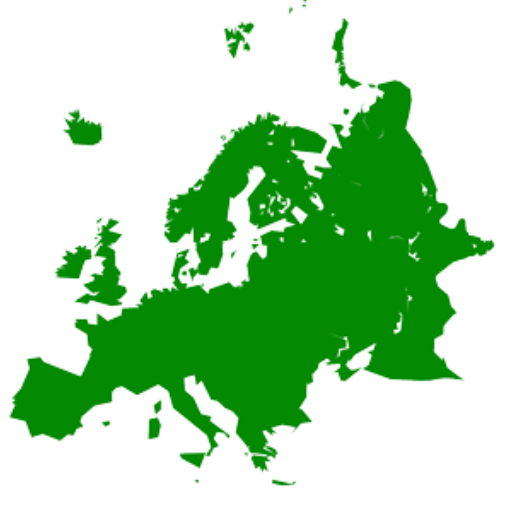 States of Europe
States of Europe

 States of Europe
States of Europe

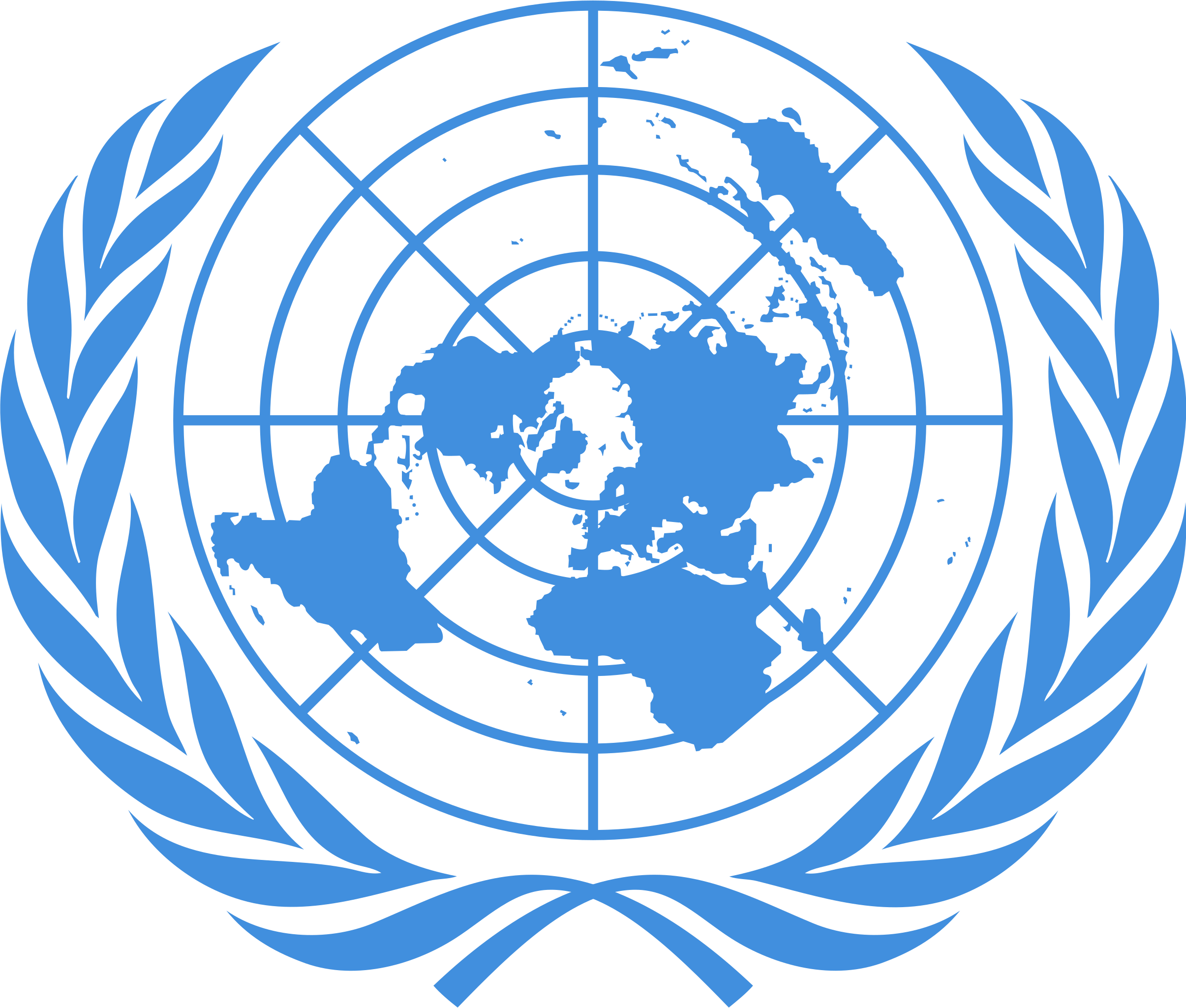 United Nations
United Nations
 United Nations Security Council
United Nations Security Council
 Hydrogen bomb
Hydrogen bomb
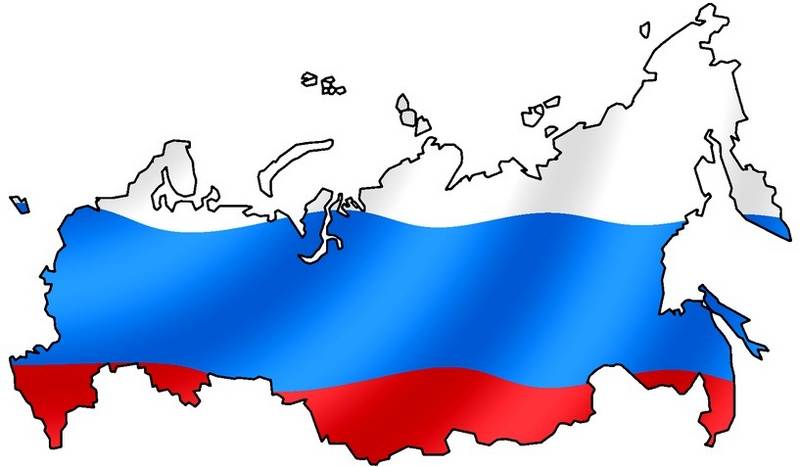
俄罗斯联邦[9](俄语:Российская Федерация,缩写为РФ),通称俄罗斯(Россия)[10],是位于欧亚大陆北部的联邦共和国,国土横跨欧亚两大洲,为世界上土地面积最大的国家,拥有1709万平方公里的面积,占地球陆地面积八分之一[11][12];它也是世界上第九大人口国家,拥有1.4亿人口,77%居住于其较为发达的欧洲部分。俄罗斯国土覆盖整个亚洲北部及东欧大部,横跨11个时区,涵盖广泛的环境和地形。拥有全世界最大的森林储备和含有约世界四分之一的淡水的湖泊[13]。俄罗斯有十四个陆上邻国(从西北方向起逆时针序):挪威、芬兰、爱沙尼亚、拉脱维亚、立陶宛、波兰、白俄罗斯、乌克兰、格鲁吉亚、阿塞拜疆、哈萨克斯坦、中国、蒙古和朝鲜(其中立陶宛和波兰仅与俄罗斯外飞地加里宁格勒州接壤),另外与阿布哈兹和南奥塞梯两个只有俄罗斯承认的非联合国会员国接壤。同时,俄罗斯还与日本、美国、加拿大、格陵兰(丹麦)、冰岛、瑞典、土耳其隔海相望。俄罗斯北部和东部分别为北冰洋和太平洋包围,西北和西南则分别可经由波罗的海和黑海通往大西洋。
俄罗斯历史始于欧洲的东斯拉夫民族,聚集区域自公元3世纪至8世纪逐渐扩大[14]。在9世纪,源自北欧的瓦良格人武士精英建立了基辅罗斯这个中世纪国家并开始统治。公元988年,国家从拜占庭帝国采纳了东正教会,随后由此开始,千年拜占庭与斯拉夫文化的融合成为了今日的俄罗斯文化[15]。基辅罗斯最终解散分化为众多公国,被蒙古人逐一击破,并均在13世纪成为了金帐汗国的一部分。莫斯科大公自14世纪起逐渐崛起并统一周边俄罗斯诸侯国,在15世纪成功从金帐汗国独立,且成为了基辅罗斯文化和政治的继承者。16世纪起伊凡四世自称沙皇,自诩“第三罗马”。在18世纪,俄罗斯沙皇国通过征服、吞并和探索而扩张。彼得一世称帝成立了俄罗斯帝国,最终成为史上领土第三大帝国,疆域最大曾自中欧的波兰连绵至北美的阿拉斯加[16][17]。
1917年俄国革命后,俄罗斯苏维埃联邦社会主义共和国成为了世界上第一个宪法意义上的社会主义国家[18],并成为随后成立的苏维埃社会主义共和国联盟的主体和其最大的加盟共和国。二战时期,苏联为同盟国的胜利扮演了决定性的角色。在战后其崛起成为公认的超级大国,并在冷战时期与美国互相竞争。苏联时期产生了20世纪的许多最重要的科技成就,其中包括世界第一颗人造地球卫星,以及首次将人类送入太空。在1990年,苏联为世界上第二大经济体[19],且拥有世界上最多的常备军人以及最多的大规模杀伤性武器库存。1991年苏联解体后,包括俄罗斯在内的15个共和国从原苏联独立;身为原苏联最大的加盟共和国,俄罗斯通过修宪改制为俄罗斯联邦,成为原苏联的唯一法理继承国家,政体采用联邦制、民主共和制及半总统制。
截至2015年,俄罗斯根据国民生产总值为世界第13大经济体,根据购买力平价为世界第六大经济体。俄罗斯拥有世界上最大储量的矿产和能源资源[20],是世界上最大的石油和天然气输出国[21][22]。俄罗斯为世界大国之一,为认定的拥核国家,联合国安理会常任理事国,G20、欧洲理事会、亚太经合组织、上合组织、欧安组织、世贸组织和金砖国家成员。它也是独联体、集体安全条约组织的领导者和欧亚经济联盟创始成员。俄罗斯亦是世界八大工业国之一。
Russland (russisch Россия [rɐˈsʲijə] , Transkription Rossija) bzw. die Russische Föderation (oder der russischen Bezeichnung entsprechend Russländische Föderation; russisch Российская Федерация, , Transkription Rossijskaja Federazija)[9] ist ein souveräner, föderativer Staat im nordöstlichen Eurasien und mit etwa 17 Millionen Quadratkilometern flächenmäßig der größte Staat der Erde. Russland umfasst mehr als ein Achtel der bewohnten Landmasse der Erde und steht mit 144 Millionen Einwohnern (2017) an 9. Stelle der bevölkerungsreichsten Länder; es ist zugleich eines der am dünnsten besiedelten. Der europäische Teil des Staatsgebiets ist viel dichter besiedelt und verstädtert als der über dreimal so große asiatische Teil: Etwa 77 % der Bevölkerung (110 Millionen Einwohner) leben westlich des Urals. Die Hauptstadt Moskau ist eine der größten Städte und Metropolregionen der Welt; als weiteres wichtiges Zentrum gilt Sankt Petersburg, das zwischen 1712 und 1918 Hauptstadt war und eine Brücke für Kunst und Kultur aus Westeuropa bildete.
Die nächstgrößeren Millionenstädte Russlands sind Nowosibirsk in Sibirien, Jekaterinburg im Ural und Nischni Nowgorod an der Wolga. Weitere Großstadtregionen sind Tscheljabinsk, Ufa und Kasan.
Das heutige Russland entwickelte sich aus dem Großfürstentum Moskau, einem Teilfürstentum des früheren ostslawischen Reiches Kiewer Rus, zu einem über einhundert Ethnien zählenden Vielvölkerstaat, wobei ethnische Russen heute fast 80 Prozent der Bevölkerung ausmachen. Die föderale Gliederung Russlands besteht aus acht Föderationskreisen und 85 Föderationssubjekten.
Die Russische Föderation ist „Fortsetzerstaat“[10] der Sowjetunion in internationalen Organisationen, Atommacht und ständiges Mitglied des Weltsicherheitsrates. Nach der Erholung von der postkommunistischen Transformationskrise der 1990er Jahre wurde Russland die nach Kaufkraftparität sechstgrößte Volkswirtschaft der Welt, zwischen Deutschland und Brasilien (Schätzung für 2016).[11]
Russlands Rohstoffreserven sind mit etwa 20 bis 30 % die wahrscheinlich größten der Welt,[12][13][14] mit erheblichen Vorkommen von Primärenergieträgern, vor allem Erdgas.
Russland gehört zu den anerkannten Nuklearmächten und besitzt das weltgrößte Arsenal an Massenvernichtungswaffen. Russland ist Großmacht und Regionalmacht und wird teilweise als potentielle Supermacht betrachtet.[15] Es ist ständiges Mitglied im Sicherheitsrat der Vereinten Nationen, G 20-Mitglied, Mitglied des Europarates, der APEC, der Shanghaier Organisation für Zusammenarbeit (SCO), der OSCE, der WTO; es ist führendes Mitglied in der Gemeinschaft Unabhängiger Staaten (GUS), der Organisation des Vertrags über kollektive Sicherheit (OVKS) und der Eurasischen Wirtschaftsunion (mit Armenien, Kasachstan, Kirgisistan und Weißrussland).
Russland ist ein Schwellenland im Bereich des oberen mittleren Einkommens.[16] Im Human Development Index der Vereinten Nationen stand Russland 2016 mit 0,8 (von 1) auf Platz 49,[17] der Gini-Koeffizient lag bei 37,7.
Das Regierungssystem Russlands wird von Politikwissenschaftlern entsprechend dem Wortlaut der Verfassung meist formal als Verbindung präsidentieller und parlamentarischer Formen eingeordnet; die Verfassungswirklichkeit des politischen Systems entspricht jedoch eher den Modellen defekter Demokratien oder der Postdemokratie, zumal der Präsident fast autokratische Macht ausübt.[18][19][20] Für die politische Ordnung wird in Russland gelegentlich von offizieller Seite der Begriff „Gelenkte Demokratie“ im affirmativen Sinne gebraucht.[21]
Die Annexion der Krim im März 2014 belastet die Beziehungen zwischen Russland und dem Westen. Der russischen Regierung wird vorgeworfen, die europäische Friedensordnung zu verletzen.[22]
Das Land war 2016 mit 69,9 Mrd. Dollar für 4,1 % der weltweiten Militärausgaben verantwortlich und liegt damit im internationalen Vergleich hinter den Vereinigten Staaten mit 611 Mrd. Dollar (36 %) und China mit 215 Mrd. Dollar (13 %) auf Platz 3, gefolgt von Saudi-Arabien und Indien.[23][24]
ロシア連邦(ロシアれんぽう、ロシア語: Российская Федерация:英語名 Russian Federation)、またはロシア (Россия) は、ユーラシア大陸北部にある共和制及び連邦制国家。
地理的にロシアの国境は、北西から南東へ、ノルウェー、フィンランド、エストニア、ラトビア、リトアニアおよびポーランド(ともにカリーニングラード州と隣接)、ベラルーシ、ウクライナ、ジョージア、アゼルバイジャン、カザフスタン、中華人民共和国、モンゴル国、朝鮮民主主義人民共和国と接する。海上境界線としては、日本とはオホーツク海・宗谷海峡・根室海峡・珸瑤瑁水道、アメリカ合衆国とはベーリング海峡でアラスカ州と接する。ロシアの面積は17,075,400km2で世界最大であり、地球上の居住地域の8分の1を占める。2012年時点で、ロシアの人口は1億4300万人で世界第9位である[3]。国土は北アジア全体および東ヨーロッパの大部分に広がることに伴い、ロシアは11の標準時を有し、広範な環境および地形を包含する。
ロシアの歴史は、3世紀から8世紀までの間にヨーロッパで認識され始めた東スラヴ人の歴史に始まる[4]。9世紀、ヴァリャーグの戦士の精鋭およびその子孫により設立及び統治されて、キエフ大公国の中世国家が誕生した。988年、東ローマ帝国から正教会を導入し、次の千年紀のロシア文化を特徴付ける東ローマ帝国およびスラブ人の文化の統合が始まった[5]。キエフ大公国は最終的には多くの国に分裂し、キエフ大公国の領土の大部分はモンゴルに制圧され、遊牧国家ジョチ・ウルスの属国になった[6]。モスクワ大公国は次第に周辺のロシアの公国を再統合し、ジョチ・ウルスからの独立を獲得し、キエフ大公国の文化的および政治的な遺産を支配するようになった。18世紀までにモスクワ大公国は、王朝による征服・併合、シェレホフ提督による探検を通じ、史上第3位の大帝国であるロシア帝国となり、版図がポーランドから北米のアラスカまで広がった[7][8]。
しかし帝国は国土に見合う開発資金を国内で捻出することができなかった。サンクトペテルブルクの貿易為替銀行にドイツ銀行を参加させたが、露仏同盟を結んで以来国際金融市場から外資が雪崩れ込むようになった。
ロシア革命後、ロシア・ソビエト連邦社会主義共和国がソビエト連邦最大かつ指導的な構成国となり、世界初の憲法上の社会主義国および広く認められた超大国となり[9]、第二次世界大戦において連合国の勝利に決定的な役割を果たした[10][11]。ソビエト時代には、世界初の人工衛星および世界初の有人宇宙飛行を含む20世紀の最も重要な複数の技術的偉業を経験した。1991年のソ連崩壊後、ロシア・ソビエト連邦社会主義共和国は自らをロシア連邦として再構成し、連邦国家の継続的な法人格として認識されている。ソ連政府は国民にあまねく賃貸住宅を配分していたが、それらを建設するだけで巨額の財政負担となっており、財政再建中のロシア連邦がリフォームすることなどかなわず、無償で住民が物件を取得できるようにしてしまい急激な私有化を進めた[12]。私有化されていないものは地方自治体への譲渡が進んで、人口減少社会となる中、若者向けに低家賃で貸し出されている[12]。
1996年11月、ロシアは第一回だけで10億ドルのユーロ債を起債した[13]。それまでの累積ユーロ債発行額は160億ドルほどに達した[13]。1997年、第一回サンクトペテルブルク国際経済会議が開かれた。1998年、ロシア財政危機。1999年、ロスチャイルド代理人のアルフレッド・ハルトマン博士が資金洗浄の国内捜査線上で名前をとりあげられた。
2003年、ミハイル・ホドルコフスキーが脱税などの罪で逮捕・起訴され、ユコスの社長を辞任した。シブネフチとの合併が取り消されるなどして株価が乱高下し、内部者取引が横行した。2005年でロシアの住宅私有化率は63%に達し[12]、国際的な不動産価格の下落へつながっていった。2007年、ホドルコフスキーを除くユコス株主らは、ロシア政府がユコスを破綻させたとしてハーグの常設仲裁裁判所へ提訴した(ユコス破綻事件)。2010年6月26日、政府側のロスネフチに賠償命令が出た。7月27日、内部者取引と株価操作を取り締まる法案がようやく批准された[14]。これは翌年から施行された。
2014年ウクライナ騒乱が2月に起きてVTBが態度を硬化させた。7月、ユコス破綻事件で政府は19億ユーロの賠償金支払いを命じられていたが、12月に欧州人権裁判所が政府の上訴を棄却した[15]。2016年4月、ハーグ地区裁判所が、ロシア政府に株主らへ500億ドルの賠償金支払いを命じた常設仲裁裁判所の判決を棄却した[16]。
2014年時点で、ロシアの経済は名目GDPで世界第9位かつ購買力平価で世界第6位であった[17]。ロシアの豊富な鉱物およびエネルギー資源は世界最大の埋蔵量であり[18]、世界最大の原油生産国および世界最大の天然ガス生産国の一つである。ロシアは核保有を認められた5大国の一つであり、世界最大の大量破壊兵器保有量がある。ロシアは列強および国際連合安全保障理事会常任理事国であり、独立国家共同体の指導国であるだけでなく、G20、欧州評議会、アジア太平洋経済協力、上海協力機構、ユーラシア経済共同体、欧州安全保障協力機構 (OSCE)、世界貿易機関 (WTO) 加盟国である。
Russia (Russian: Росси́я, tr. Rossiya, IPA: [rɐˈsʲijə]), officially the Russian Federation[12] (Russian: Росси́йская Федера́ция, tr. Rossiyskaya Federatsiya, IPA: [rɐˈsʲijskəjə fʲɪdʲɪˈratsɨjə]), is a transcontinental country in Eastern Europe and North Asia.[13] At 17,125,200 square kilometres (6,612,100 sq mi),[14] Russia is the largest country in the world by area, covering more than one-eighth of the Earth's inhabited land area,[15][16][17] and the ninth most populous, with about 146.77 million people as of 2019, excluding Crimea.[8] About 77% of the population live in the western, European part of the country. Russia's capital, Moscow, is the largest metropolitan area in Europe proper[18] and one of the largest cities in the world; other major cities include Saint Petersburg, Novosibirsk, Yekaterinburg and Nizhny Novgorod. Extending across the entirety of Northern Asia and much of Eastern Europe, Russia spans eleven time zones and incorporates a wide range of environments and landforms. From northwest to southeast, Russia shares land borders with Norway, Finland, Estonia, Latvia, Lithuania and Poland (both with Kaliningrad Oblast), Belarus, Ukraine, Georgia, Azerbaijan, Kazakhstan, China, Mongolia and North Korea. It shares maritime borders with Japan by the Sea of Okhotsk and the U.S. state of Alaska across the Bering Strait. However, Russia recognises two more countries that border it, Abkhazia and South Ossetia, both of which are internationally recognized as parts of Georgia.
The East Slavs emerged as a recognizable group in Europe between the 3rd and 8th centuries AD.[19] Founded and ruled by a Varangian warrior elite and their descendants, the medieval state of Rus arose in the 9th century. In 988 it adopted Orthodox Christianity from the Byzantine Empire,[20] beginning the synthesis of Byzantine and Slavic cultures that defined Russian culture for the next millennium.[20] Rus' ultimately disintegrated into a number of smaller states; most of the Rus' lands were overrun by the Mongol invasion and became tributaries of the nomadic Golden Horde in the 13th century.[21] The Grand Duchy of Moscow gradually reunified the surrounding Russian principalities and achieved independence from the Golden Horde. By the 18th century, the nation had greatly expanded through conquest, annexation, and exploration to become the Russian Empire, which was the third largest empire in history, stretching from Poland on the west to Alaska on the east.[22][23]
Following the Russian Revolution, the Russian Soviet Federative Socialist Republic became the largest and leading constituent of the Union of Soviet Socialist Republics, the world's first constitutionally socialist state.[24] The Soviet Union played a decisive role in the Allied victory in World War II,[25][26] and emerged as a recognized superpower and rival to the United States during the Cold War. The Soviet era saw some of the most significant technological achievements of the 20th century, including the world's first human-made satellite and the launching of the first humans in space. By the end of 1990, the Soviet Union had the world's second largest economy, largest standing military in the world and the largest stockpile of weapons of mass destruction.[27][28][29] Following the dissolution of the Soviet Union in 1991, twelve independent republics emerged from the USSR: Russia, Ukraine, Belarus, Kazakhstan, Uzbekistan, Armenia, Azerbaijan, Georgia, Kyrgyzstan, Moldova, Tajikistan, Turkmenistan and the Baltic states regained independence: Estonia, Latvia, Lithuania; the Russian SFSR reconstituted itself as the Russian Federation and is recognized as the continuing legal personality and a successor of the Soviet Union.[30] It is governed as a federal semi-presidential republic.
Russia's economy ranks as the twelfth largest by nominal GDP and sixth largest by purchasing power parity in 2015.[31] Russia's extensive mineral and energy resources are the largest such reserves in the world,[32] making it one of the leading producers of oil and natural gas globally.[33][34] The country is one of the five recognized nuclear weapons states and possesses the largest stockpile of weapons of mass destruction.[35] Russia is a great power as well as a regional power and has been characterised as a potential superpower. It is a permanent member of the United Nations Security Council and an active global partner of ASEAN,[36][37][38] as well as a member of the Shanghai Cooperation Organisation (SCO), the G20, the Council of Europe, the Asia-Pacific Economic Cooperation (APEC), the Organization for Security and Co-operation in Europe (OSCE), and the World Trade Organization (WTO), as well as being the leading member of the Commonwealth of Independent States (CIS), the Collective Security Treaty Organization (CSTO) and one of the five members of the Eurasian Economic Union (EEU), along with Armenia, Belarus, Kazakhstan and Kyrgyzstan.
La Russie, en forme longue la fédération de Russiea (en russe : Россия, Rossiab ; [forme longue] Российская Федерация, Rossiïskaïa Federatsiïac), est un État fédéral transcontinental dont le territoire est le plus vaste de la planète.
Sa population est estimée à 146,88 millions d’habitants en 20181. Le pays est à cheval sur l’Asie du Nord (74,7 % de sa superficie) et sur l’Europe (25,3 % de sa superficie, mais 78 % de ses habitants sont en Europe6). Son territoire s'étend d’ouest en est (de Kaliningrad à Vladivostok) sur plus de 9 000 km pour une superficie de dix-sept millions de kilomètres carrés (17 000 000 km2) et compte onze fuseaux horaires7. Sa capitale est Moscou, sa langue officielle le russe et sa monnaie le rouble. Bien qu’entourée de nombreuses mers et de deux océans, la Russie est caractérisée par un climat continental avec des milieux froids et hostiles sur la majeure partie du territoire.
La Russie dispose de ressources minières (houille, fer, nickel, diamant, etc.) et énergétiques (pétrole, gaz naturel, hydroélectricité) abondantes qui en font l’un des principaux producteurs et exportateurs mondiaux. Elle se dote, à l'époque de l’URSS, d'une industrie lourde puissante (aciéries, raffineries, industrie chimique, etc.). Les secteurs liés à l’armement, au nucléaire et à l’aérospatiale sont également fortement développés, ce qui a permis au pays de jouer un rôle pionnier dans la conquête de l'espace.
La république socialiste fédérative soviétique de Russie (RSFSR) fut la plus importante des quinze républiques de l’Union des républiques socialistes soviétiques, dont elle constituait le noyau historique.
Fin 1991, l’URSS éclate en quinze États indépendants souverains, dont la Russie, qui a hérité des trois quarts du territoire de l’ancienne superpuissance, de plus de la moitié de sa population, des deux tiers de son industrie et de la moitié de sa production agricole. La Russie occupe aussi dans la continuité sa place dans les institutions internationales, dont le siège permanent au Conseil de sécurité des Nations unies, et a également assumé le passif financier de l’URSS. La Russie est aussi fondatrice de la Communauté des États indépendants (CEI) qui rassemble neuf des quinze ex-républiques soviétiques.
Elle demeure une fédération constituée de 85 sujets disposant d’une autonomie politique et économique variable. Le découpage, tenant compte entre autres de la présence de minorités, existait déjà dans l’ancienne URSS.
Après la fin du système soviétique au début des années 1990, le pays a graduellement adopté une économie de marché et un régime parlementaire pluraliste. Aspirant à suivre la mondialisation, la Russie se considère par ailleurs comme étant le pont entre l'Europe et l'Asie. Aujourd'hui, la Russie fait partie des BRICS aux côtés de la Chine, de l'Inde, de l'Afrique du Sud et du Brésil. Elle est actuellement douzième puissance mondiale en 2017 en matière de PIB à valeur nominale8 et sixième en parité de pouvoir d'achat9. En devenant la première capitalisation boursière européenne10, le géant gazier Gazprom devient le symbole de cette expansion russe11, au même titre que le leader mondial de l'aluminium Rusal. Avec la chute du rouble (liée aux réactions internationales à la suite de la crise de Crimée) et du pétrole en 2014, le PIB de la Russie est retombé en 2015 au niveau de celui de 2006, ce qui fait un PIB nominal par habitant d'un peu plus de 9 000 $12.
La Russia (in russo: Россия?, traslitterato: Rossija, ) o la Federazione Russa (in russo: Российская Федерация?, traslitterato: Rossijskaja Federacija, ) è uno Stato transcontinentale che si estende tra l'Europa e l'Asia ed è il più vasto Stato del mondo, con una superficie di circa 17 098 242 km² (per più della metà disabitato).[5]
Confina con Norvegia, Finlandia, Estonia, Lettonia, Lituania, Polonia, Bielorussia, Ucraina, Georgia e territori contesi di Ossezia del Sud e Abcasia, Azerbaigian, Kazakistan, Cina, Corea del Nord e Mongolia; assieme alla Cina, è lo Stato al mondo con il maggior numero di Stati limitrofi (14), mentre, considerando anche i due Stati con ridotto riconoscimento internazionale di Abcasia e Ossezia del Sud (entrambi riconosciuti dalla Russia), gli Stati confinanti con la Russia diventano 16. Essa possiede, inoltre, confini marittimi con il Giappone (attraverso il mare di Ochotsk) e gli Stati Uniti (attraverso lo stretto di Bering). È bagnata a Nord-Ovest dal mar Baltico nel golfo di Finlandia, a Nord dal mar Glaciale Artico, a Est dall'oceano Pacifico e a Sud dal mar Nero e dal mar Caspio. Comprende anche l'exclave dell'Oblast' di Kaliningrad, compresa tra mar Baltico, Polonia e Lituania. Nel 2016 contava circa 144 milioni di abitanti, ha come capitale Mosca ed è tradizionalmente suddivisa tra Russia europea e asiatica dalla catena montuosa degli Urali.
Come principale successore dell'Unione Sovietica, la Russia ha mantenuto il seggio di membro permanente nel Consiglio di sicurezza delle Nazioni Unite. Resta ancora secondo alcuni accademici una grande potenza, tra i protagonisti della storia del XX secolo, sia nel secondo conflitto mondiale, sia nel secondo dopoguerra, con la guerra fredda e l'opposizione attraverso il blocco sovietico al cosiddetto blocco occidentale, che annoverava anche l'altra superpotenza, gli Stati Uniti. È uno Stato con una forte influenza politica all'interno della Comunità degli Stati Indipendenti, che comprende tutte le ex-Repubbliche dell'Unione Sovietica tranne le tre repubbliche baltiche, il Turkmenistan, la Georgia (uscita nel 2008) e l'Ucraina (uscita come membro osservatore nel 2014). È inoltre uno degli Stati fondatori dell'Unione eurasiatica, che comprende, oltre la Russia, la Bielorussia, l'Armenia e il Kazakistan e vede il Tagikistan e l'Uzbekistan come Stati osservatori.
Nei primi anni del XXI secolo l'economia ha presentato tassi di crescita tra i più elevati a livello globale, tanto che la Russia è considerata uno dei cinque Paesi cui ci si riferisce con l'acronimo BRICS.[6] La crisi finanziaria internazionale si è fatta però sentire duramente a partire dall'autunno 2008, mettendo in dubbio molte delle certezze acquisite in un decennio di espansione[7]. Il 18 marzo 2014, in seguito all'esito di un referendum che vide la schiacciante vittoria dei favorevoli all'annessione alla Russia ed era stato indetto dalle forze politiche della Repubblica autonoma di Crimea che si era proclamata unilateralmente indipendente dall'Ucraina in data 11 marzo 2014, è cominciato l'iter amministrativo di integrazione della penisola di Crimea (compresa quindi anche la città autonoma di Sebastopoli) come nuovo soggetto federale della Federazione Russa, sebbene l'occupazione non sia riconosciuta dall'ONU.
Rusia (en ruso: Россия, romanización: Rossíya)n. 1 o formalmenten. 2 Federación de Rusian. 1 (en ruso: Российская Федерация, romanización: Rossíyskaya Federátsiya) es el país más extenso del mundo. La Federación de Rusia cuenta con una superficie de 17 098 242 km2,1 equivalente a la novena parte de la tierra firme del planeta, y con gran variedad de relieve y de ecosistemas. Su capital es la ciudad federal de Moscú.
Esta república semipresidencialista, formada por ochenta y tres sujetos federales, es el noveno país por población al tener 146 804 372 habitantes7. Ocupa toda el Asia del Norte y alrededor del 40 % de Europa (principalmente Europa Oriental),n. 3 y es un país transcontinental. En Rusia hay once zonas horarias, desde UTC+2 hasta UTC+12.n. 4 Rusia tiene las mayores reservas de recursos energéticos y minerales del mundo aún sin explotar, y es considerada la mayor superpotencia energética. Posee las mayores reservas de recursos forestales y la cuarta parte del agua dulce sin congelar del mundo.
Rusia es el país que limita con mayor número de países, un total de dieciséis,n. 5 y el que tiene las fronteras más extensas. Limita con los siguientes países (empezando por el noroeste y siguiendo el sentido antihorario): Noruega, Finlandia, Estonia, Letonia, Bielorrusia, Lituania,n. 6 Polonia,n. 6 Ucrania,n. 7 Georgia,n. 8 Azerbaiyán, Kazajistán, República Popular China, Mongolia y Corea del Norte. Tiene límites de aguas territoriales con varios de los anteriores, con Japón y con los Estados Unidos (en concreto, con el estado de Alaska). Limita también con los estados de reconocimiento limitado Abjasia, Osetia del Sur y la Unión de Repúblicas Populares (Nueva Rusia). Las costas de Rusia están bañadas por el océano Ártico, el norte del Océano Pacífico y mares interiores como el Báltico, el Negro y el Caspio.
La historia de Rusia comienza con los eslavos orientales. Los eslavos emergieron como un grupo reconocible en Europa entre los siglos III y VIII.7 Fundado y dirigido por una clase guerrera noble de vikingos y sus descendientes, el primer estado de los eslavos orientales, la Rus de Kiev, surgió en el siglo IX y en el año 988 adoptó el cristianismo procedente del Imperio bizantino. Comenzó entonces una síntesis de las culturas bizantina y eslava que definiría la rusa durante el siguiente milenio.8 Más tarde, la Rus de Kiev se desintegró en muchos pequeños estados feudales, de los cuales el más poderoso fue el Principado de Moscú, que se convirtió en la fuerza principal en el proceso de la reunificación rusa y la lucha por la independencia contra la Horda de Oro. Moscú reunificó gradualmente los principados rusos circundantes y comenzó a dominar en el legado cultural y político de la Rus de Kiev. En el siglo XVIII, el país se expandió mediante la conquista, la anexión y la exploración hasta convertirse en el tercer imperio más grande de la historia, el ruso, al extenderse desde Polonia, en poniente, hasta el Océano Pacífico y Alaska.
Rusia ha tenido poder y mucha influencia en el mundo: primero, en los tiempos del Imperio Ruso; después, como el país dominante de la Unión Soviética (URSS), el primero y el más grande de los estado socialistas constitucionalmente establecidos y una superpotencia reconocida como tal; y, actualmente, como la Federación de Rusia. Tiene una larga tradición de calidad en todos los aspectos de las artes y de las ciencias.7 La Federación Rusa se fundó en 1991, al disolverse la Unión Soviética, y es reconocida como la heredera de la personalidad legal de ésta.9 Su economía tiene uno de los mayores crecimientos del mundo. Es el octavo país por PIB nominal y el sexto por PIB (PPA), con el tercer presupuesto militar más grande del mundo. Es uno de los cinco países con armas nucleares reconocidos y posee el mayor arsenal de armas de destrucción masiva del mundo.10 Rusia es miembro permanente del Consejo de Seguridad de Naciones Unidas, miembro del G20, del APEC y de la OCS, y tiene mucha influencia en los países que fueron repúblicas soviéticas, particularmente en la Comunidad de Estados Independientes (CEI).
Росси́я, официально также Росси́йская Федера́ция[e] (РФ[f]) — государство в Восточной Европе и Северной Азии. Территория России в рамках её конституционного устройства[c] составляет 17 125 191[5] км²; население страны (в пределах её заявленной территории[c]) составляет 146 793 744[6] чел. (2019). Занимает первое место в мире по территории, шестое — по объёму ВВП по ППС и девятое — по численности населения.
Столица — Москва. Государственный язык — русский.
Президентско-парламентская республика[2] с федеративным устройством. С 7 мая 2012 года пост Президента занимает Владимир Путин. C 8 мая 2012 года пост Председателя Правительства занимает Дмитрий Медведев.
В состав Российской Федерации входят 85 субъектов[c], 46 из которых именуются областями, 22[c] — республиками, 9 — краями, 3[c] — городами федерального значения, 4 — автономными округами и 1 — автономной областью. Всего в стране около 157 тысяч населённых пунктов[15].
Россия граничит с шестнадцатью государствами (больше, чем любая другая страна в мире), а также двумя частично признанными государствами.
Россия — многонациональное государство, отличающееся большим этнокультурным многообразием[16]. Бо́льшая часть населения (около 75 %) относит себя к православию[17], что делает Россию страной с самым многочисленным православным населением в мире.
Ядерная держава[18][19][20]; одна из ведущих промышленных[21][22] и космических держав мира[23]. Россия занимает 1-е место в рейтинге самых образованных стран мира [24]; Русский язык — язык мирового значения, один из шести официальных и рабочих языков ООН, ЮНЕСКО и других международных организаций. Россия является постоянным членом Совета безопасности ООН с правом вето; одна из современных великих держав мира[25].
После распада СССР в конце 1991 года Российская Федерация была признана международным сообществом как государство-продолжатель СССР[26] в вопросах ядерного потенциала, внешнего долга, государственной собственности за рубежом, а также членства в Совете Безопасности ООН[27]. Россия состоит в ряде международных организаций: ООН, ОБСЕ, Совете Европы, ЕАЭС, СНГ, ОЧЭС, ОДКБ, ГКМЧП, ВОИС, ММО, ВТО, ЮНВТО, ВФП, ШОС, АТЭС, БРИКС, КООМЕТ, МОК, МЭК, ISO, EUREKA, IRENA, G20 и других.
По данным Всемирного банка, объём ВВП по ППС за 2017 год составил 3,817 трлн долларов (25 532 долларов на человека), по данным МВФ - 4,008 трлн долларов. Денежная единица — российский рубль.
 California State Route 1
California State Route 1

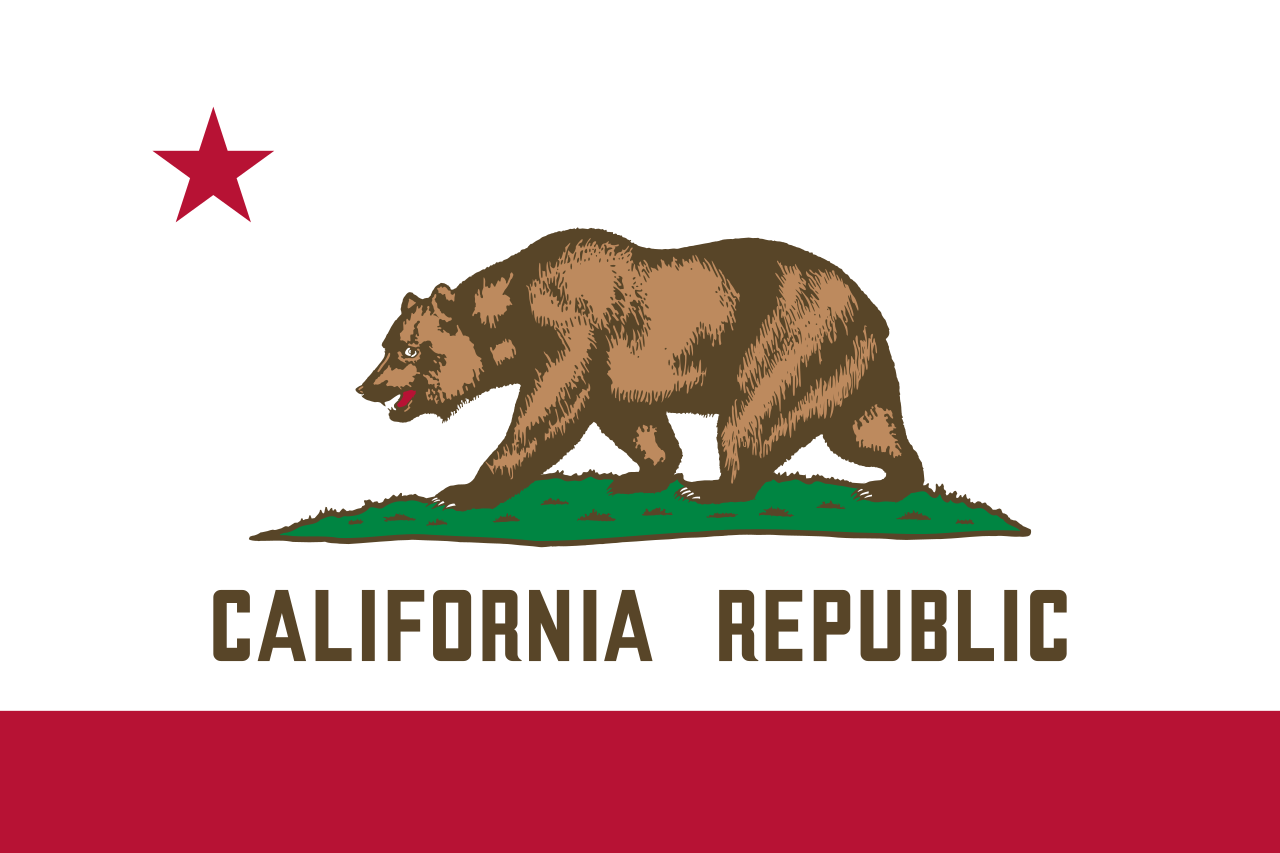 California-CA
California-CA

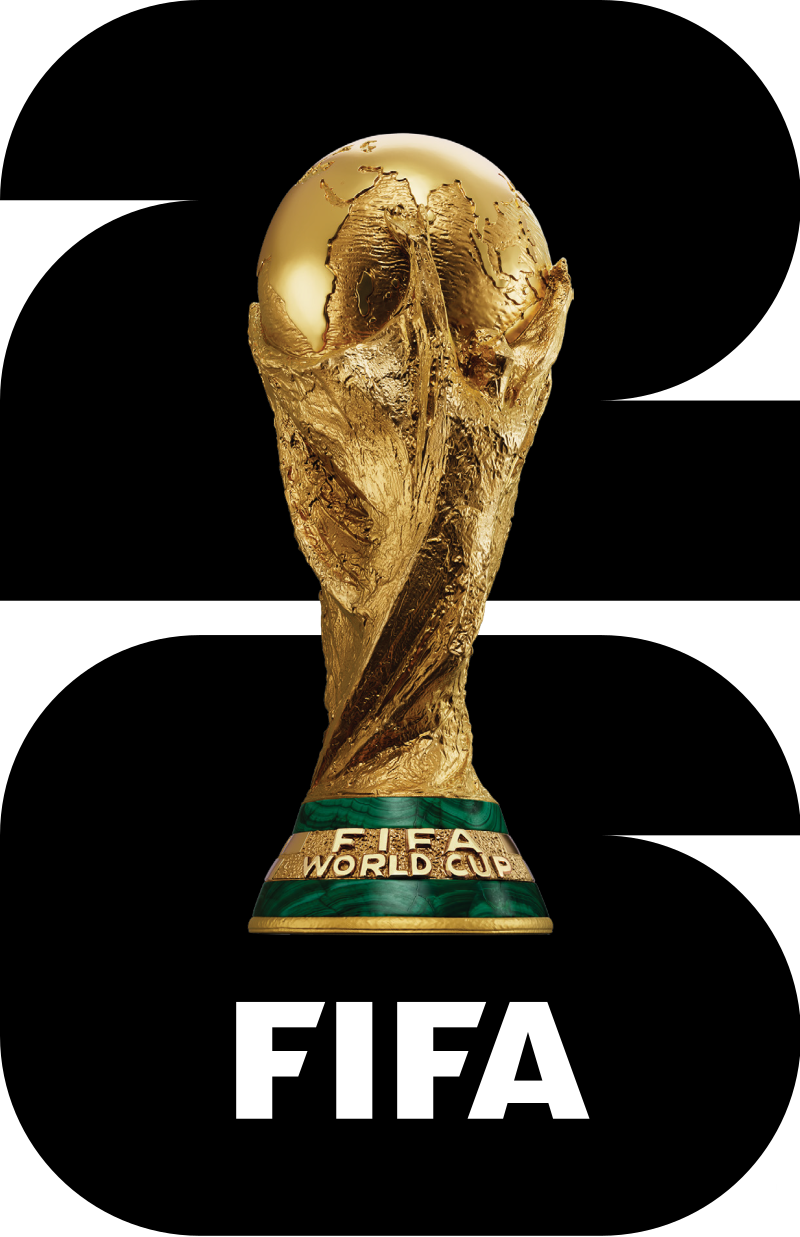 FIFA Fussball-Weltmeisterschaft 2026
FIFA Fussball-Weltmeisterschaft 2026

 Financial
Financial
 ***Global Financial Center
***Global Financial Center

 History
History
 N 2000 - 2100 AD
N 2000 - 2100 AD

 History
History
 M 1500 - 2000 AD
M 1500 - 2000 AD

 International cities
International cities
 ***Global Urban Economic Competitiveness
***Global Urban Economic Competitiveness
 Silk road
Silk road
 United States
United States

 Important port
Important port

太平洋沿岸仅次于洛杉矶的第二大港市。位于加利福尼亚州西北部,美国西海岸中点。市区面积119平方公里,人口72.4万(1990),为美国西部人口密度最高的城市。大市区包括附近4个县和奥克兰、伯克利等城镇,面积7475平方公里。
城市座落在宽不足10公里的半岛北端,介于太平洋和圣弗朗西斯科湾之间,北临金门海峡。市域内丘陵起伏,有双峰山、戴维森山,最著名者为诺布山; 沿海地带较为平坦。南流的萨克拉门托河和北流的圣华金河在城市附近汇合后,向西注入圣弗朗西斯科湾。因地处圣安德烈斯大断层上,多地震。气候宜人,冬季温 和,1月平均气温9℃;夏季凉爽,7月平均气温17.8℃。年平均降水量约500毫米,以冬雨为主,夏日多雾。1776年为西班牙移民拓居地。1806年俄国在此设哨所,作为当时俄届阿拉斯加的物资供应站。1821年属墨西哥。1846年归美国时,为居民不到干人的小镇。1848年附近地区发现金矿,大批淘金者涌入,包括第一批中国“契 约劳工”。1850年设市时,人口已增至2.5万人,成为贸易和为矿业服务的中心,附近地区的农业也有所发展。18邱年后随着横贯大陆铁路的通达和港区设 施的逐步完善,城市迅速发展。1880年后开始向海湾以东地区扩展,形成若干卫星城镇,19世纪末,人口已达34万。1906年大地震时全城80%建筑被 毁,后迅速重建。1914年巴拿马运河通航,港口日益繁荣,贸易量激增。第二次世界大战中,为军需物资的重要供应站。战后,工、商、金融、旅游服务业和市政建设均有较大发展,大市区由单一中心扩展为由旧金山、海湾东区(奥克兰)和圣何塞三大中心组成的城镇群。
旧金山(英语:San Francisco),正式名称为旧金山市县(City and County of San Francisco),是位于美国加利福尼亚州北部的都市,为加州唯一市县合一的行政区,中文又音译为三藩市和圣弗朗西斯科,亦别名“金门城市”、“湾边之城”、“雾城”等。位于旧金山半岛的北端,东临旧金山湾、西临太平洋,人口约86万,为加州第四大城;其与湾边各都市组成的旧金山湾区,人口总数达768万,是仅次于大洛杉矶地区的美国西岸第二大都会区[4]。
旧金山是北加州与旧金山湾区的核心都市,当地住有很多艺术家、作家和演员,在20世纪及21世纪初一直是美国嬉皮士文化和近代自由主义、进步主义的中心之一。旧金山也是联合国的诞生地[5][6][7]。旧金山是受欢迎的旅游目的地[8],以其凉爽的夏季、多雾、绵延的丘陵地形、混合的建筑风格,以及金门大桥、缆车、恶魔岛监狱及唐人街等景点闻名。此外,旧金山也是五大主要银行及许多大型公司、机构的总部所在,其中又以互联网产业为最,包括盖璞、太平洋瓦电公司、Yelp、Dropbox、Pinterest、Twitter、优步、爱彼迎、Mozilla、维基媒体基金会、克雷格列表、Salesforce.com等。
San Francisco (Aussprache: ˌsæn fɹənˈsɪskoʊ, auch San Franzisko[3]), offiziell City and County of San Francisco (Stadt und Kreis von San Francisco), ist eine Stadt und eine Metropolregion im US-Bundesstaat Kalifornien an der Westküste der Vereinigten Staaten am Pazifischen Ozean. Mit 805.195 Einwohnern (Stand der Volkszählung 2010)[4] ist sie die viertgrößte Stadt Kaliforniens. Im globalen Vergleich gilt sie neben ähnlich großen Städten wie etwa Frankfurt am Main oder Amsterdam als mittelgroße Weltstadt.
Der Name der Stadt ist spanischen Ursprungs. San Francisco ist nach dem Heiligen Franziskus, also Franz von Assisi, benannt.
サンフランシスコ市郡(英語: City and County of San Francisco、通称: San Francisco[1])は、アメリカ合衆国西海岸にあるカリフォルニア州の北部に位置する都市。
キリスト教のフランシスコ会の修道士が創設者の聖フランシスコを街の名に付けたのが地名の由来である。漢字では、桑港や旧金山と表記される。桑港は、「サンフランシスコ」を音訳した「桑方西斯哥」(現代中国語普通話ではSāngfāngxīsīgē(サンファンシースーグー)の発音になる)の頭文字「桑」(サン)に、港町である事を示す「港」を加えたものである。この漢字表記は、現地の日系社会でも使われるため、商店や日本語学校などの名称によく見られる。ジャパンタウン(日本人街)にある曹洞宗の寺院「日本山桑港寺(そうこうじ)」はその代表である。一方の旧金山(舊金山)は、1849年に起こったカリフォルニア・ゴールドラッシュにちなんだ名称である。当初この地に労働者としてきた華人たちはサンフランシスコを「金山」と呼んだが、後にオーストラリア・ビクトリア州など他の地域でもゴールドラッシュが起きるとサンフランシスコは旧金山と呼ばれるようになった(「新金山」はメルボルンを指す)。現地の中国系社会では桑港と同様に広東語で「サンファンシー」の音を当てた三藩市が旧金山よりも多用される傾向があり、市当局も中文での名称を三藩市としている[2]。
アメリカの他地域では頭文字の「SF」や「フリスコ(Frisco)」愛称・略称で呼ばれることが多い。または「サンフラン」(San-Fran)との略称で呼ばれることもある。日本では、特に(航空機での渡航の対象として)「シスコ」の略称で呼ばれることも多い。地元とベイエリア周辺では単純に愛情を込めて「the city」と呼ばれることが多い。
ロサンゼルスと共にカリフォルニア州の経済、工業の中心地として知られており、金融センターとしてアメリカ西海岸では随一の重要性を持っている。2017年の調査によると、世界6位の金融センターであり、アメリカの都市ではニューヨークに次ぐ2位である[3]。サンフランシスコ自体の人口は776,733人(2000年国勢調査)だが、対岸のオークランドなどを含めた都市圏(MSA)の人口は4,123,747人にも上り、全米第12位の規模。更に南岸のサンノゼを加えたサンフランシスコ・ベイエリア全体の人口は7,092,596人で広域都市圏(合同統計地域: CSA)としては全米6番目の規模である。(いずれも2000年国勢調査)それゆえに大規模なダウンタウンが形成されており、近代的なビルが建ち並ぶ。シリコンバレーやカリフォルニア大学バークレー校にも近く、コンピュータ系の企業も多い。
気候は地中海性気候に属し、一年を通して気温の差が比較的小さく、気候的にも住みやすい都市である。急な坂が多く、深い霧に覆われることでも有名である。都市部から13マイルほど南下すると、サンフランシスコ国際空港がある。
観光地としての評価も非常に高い都市であり、外国人のみならず、アメリカ人の間でも訪れたい都市の上位にランクされている。有名な観光スポットとしてゴールデン・ゲート・ブリッジ(金門橋)やフィッシャーマンズワーフ、ツインピークス等が挙げられる。市内を走る伝統あるケーブルカーも人気が高い。
アメリカのシンクタンクが2017年に発表した総合的な世界都市ランキングにおいて、世界13位の都市と評価された[4]。アメリカの都市ではニューヨーク、ロサンゼルス、シカゴに次ぐ4位である。
世界的に著名な都市なので、ロサンゼルスと共に州都であると思われがちだが、誤りである(実際の州都はサクラメント。米国は原則として中小都市に州政府を置く伝統があり、ニューヨークもシカゴも州都ではない)。
San Francisco (SF; /ˌsæn frənˈsɪskoʊ, fræn-/; Spanish for 'Saint Francis'; Spanish: [san franˈsisko]), officially the City and County of San Francisco, is the cultural, commercial, and financial center of Northern California. San Francisco is the 13th most populous city in the United States, and the 4th most populous in California, with 884,363 residents as of 2017.[18] It covers an area of about 46.89 square miles (121.4 km2),[19] mostly at the north end of the San Francisco Peninsula in the San Francisco Bay Area, making it the second most densely populated large US city, and the fifth most densely populated U.S. county, behind only four of the five New York City boroughs. San Francisco is also part of the fifth most populous primary statistical area in the United States, the San Jose–San Francisco–Oakland, CA Combined Statistical Area (8.8 million residents).
As of 2016, it was the 7th highest-income county in the United States, with a per capita personal income of $110,418.[20] The San Francisco CSA was the country's 3rd largest urban economy as of 2017, with a GDP of $878 billion.[21] Of the 574 primary statistical areas in the US, the San Francisco CSA had the highest GDP per capita in 2017, at $99,347 per capita.[21] San Francisco was ranked 14th in the world and third in the United States on the Global Financial Centres Index as of September 2018.[22]
San Francisco was founded on June 29, 1776, when colonists from Spain established Presidio of San Francisco at the Golden Gate and Mission San Francisco de Asís a few miles away, all named for St. Francis of Assisi.[2] The California Gold Rush of 1849 brought rapid growth, making it the largest city on the West Coast at the time. San Francisco became a consolidated city-county in 1856.[23] San Francisco's status as the West Coast's largest city peaked between 1870 and 1900, when around 25% of California's population resided in the city.[24] After three-quarters of the city was destroyed by the 1906 earthquake and fire,[25] San Francisco was quickly rebuilt, hosting the Panama-Pacific International Exposition nine years later. In World War II, San Francisco was a major port of embarkation for service members shipping out to the Pacific Theater.[26] It then became the birthplace of the United Nations in 1945.[27][28][29] After the war, the confluence of returning servicemen, significant immigration, liberalizing attitudes, along with the rise of the "hippie" counterculture, the Sexual Revolution, the Peace Movement growing from opposition to United States involvement in the Vietnam War, and other factors led to the Summer of Love and the gay rights movement, cementing San Francisco as a center of liberal activism in the United States. Politically, the city votes strongly along liberal Democratic Party lines.
A popular tourist destination,[30] San Francisco is known for its cool summers, fog, steep rolling hills, eclectic mix of architecture, and landmarks, including the Golden Gate Bridge, cable cars, the former Alcatraz Federal Penitentiary, Fisherman's Wharf, and its Chinatown district. San Francisco is also the headquarters of five major banking institutions and various other companies such as Levi Strauss & Co., Gap Inc., Fitbit, Salesforce.com, Dropbox, Reddit, Square, Inc., Dolby, Airbnb, Weebly, Pacific Gas and Electric Company, Yelp, Pinterest, Twitter, Uber, Lyft, Mozilla, Wikimedia Foundation, Craigslist, and Weather Underground. It is home to a number of educational and cultural institutions, such as the University of San Francisco (USF), University of California, San Francisco (UCSF), San Francisco State University (SFSU), the De Young Museum, the San Francisco Museum of Modern Art, and the California Academy of Sciences.
San Francisco (en anglais [sæn frənˈsɪskoʊ]), officiellement City and County of San Francisco, est une ville américaine et un comté de l'État de Californie. Elle est située à l'extrémité nord de la péninsule de San Francisco, entre l'océan Pacifique à l'ouest et la baie de San Francisco à l'est. Son nom est couramment abrégé en SF et la ville est surnommée The City by the Bay4.
Fondée en 1776 par des Espagnols au sein de la Viceroyauté de la Nouvelle-Espagne, la ville, nommée en l'honneur de San Francisco de Asís, prend son essor lors de la ruée vers l'or et son prolongement, l'embellissement de San Francisco par les millionnaires du Nevada. Puis, elle devient le berceau du jeans avec la fondation de Levi Strauss & Co. Les années 1950 voient la naissance de la Beat Generation. À partir de la deuxième partie du XXe siècle, l'industrie des hautes technologies se développe dans la région de la baie. Aujourd'hui San Francisco est la ville la plus densément peuplée des États-Unis après New York. La municipalité-comté5 de San Francisco compte 805 235 habitants dans ses limites administratives6 et plus de 7 millions de personnes vivent dans l'aire métropolitaine de La Baie7, la quatrième métropole des États-Unis par sa population. La partie sud de cette dernière est occupée par la municipalité de San José et la Silicon Valley, premier pôle de hautes technologies des États-Unis qui accueille un nombre important d'entreprises de technologie de pointe de renommée mondiale telles que Cisco, Apple, Tesla Motors, Hewlett-Packard, Google, Intel ou encore Facebook8. Dans le domaine universitaire, elle accueille les prestigieuses9 université Stanford et université de Californie à Berkeley. San Francisco est également le siège de la Wikimedia Foundation dont fait partie le projet Wikipédia. Au nord s'étendent la Napa Valley et la Sonoma Valley, renommées pour leur viticulture. San Francisco fait partie des villes progressistes dans le domaine de l'écologie10,11 et du développement durable12,13,14.
Troisième destination touristique préférée des français aux États-Unis15, la ville est célèbre pour le pont du Golden Gate, l'île et ancienne prison d'Alcatraz, Fisherman's Wharf, la Transamerica Pyramid, la Coit Tower, ses maisons victoriennes, ses cable cars et ses nombreuses collines découpées de rues en pente. Haut lieu de la contre-culture, ville de tolérance et d'émancipation des minorités, San Francisco est également connue pour son Chinatown, ses quartiers homosexuels comme Le Castro, et hippie. Elle représente un foyer culturel et économique majeur aux États-Unis et accueille chaque année plusieurs événements d'ampleur mondiale16 mais vibre également au rythme des festivités animées par les différentes communautés locales17. Elle se revendique comme une ville sanctuaire pour les sans papiers depuis 198918. Sur le plan sportif, les 49ers au football américain, les Giants au baseball et les Warriors au basket-ball sont les équipes phares de la ville.
San Francisco (AFI: [sanfranˈsisko][1]; in inglese /ˌsæn frənˈsɪskoʊ/) è una città statunitense, la quarta della California per numero di abitanti (dopo Los Angeles, San Diego e San Jose), con una popolazione stimata nel 2016 di 870 887 abitanti, stima che la colloca al dodicesimo posto fra le città più popolose degli Stati Uniti d'America e allo stesso tempo al secondo posto per densità di popolazione, dietro solo a New York.[2] La città fa parte di una vasta area metropolitana (circa 7 milioni di abitanti,[3] la quinta dell'intero Paese), la San Francisco Bay Area, di cui è sempre stata il centro economico-finanziario, culturale e turistico, anche se ha ormai perso il primato di popolazione.
San Francisco è una popolare meta di molti turisti internazionali, ed è conosciuta per la sua fresca nebbia estiva, per le sue ripide colline, per la sua vivacità culturale e il suo eclettismo architettonico, che affianca stile vittoriano e architettura moderna, per i suoi famosi paesaggi, incluso il Golden Gate Bridge, per i suoi tram e per Chinatown. L'Università della California, San Francisco è uno dei principali centri biomedici del mondo, e l'ospedale è tra i principali degli Stati Uniti.
San Francisco, de forma oficial Ciudad y Condado de San Francisco (en inglés: City and County of San Francisco), es una ciudad que ocupa la cuarta posición de ciudad más poblada del estado de California y la 13.ª de Estados Unidos, con una población de aproximadamente 837 442 habitantes en 2013.6 Es la única ciudad-condado consolidada de California, y al abarcar una superficie territorial de 121 km², cuenta con la segunda densidad de población más alta del país entre las ciudades que superan los 200 000 habitantes, tras Nueva York.7 Es el centro cultural, financiero y de transportes del Área de la Bahía de San Francisco, una aglomeración metropolitana con más de siete millones de habitantes.89 Se encuentra en el extremo norte de la península de San Francisco, con el océano Pacífico al oeste, la bahía homónima al este y la entrada de la bahía al norte, por lo que solamente está conectada con tierra firme por su extremo sur.
La ciudad de San Francisco fue fundada por colonos españoles en 1776. Construyeron un fuerte en lo que hoy es el Golden Gate y fundaron una misión llamada así en honor de Francisco de Asís.10 San Francisco perteneció al Virreinato de la Nueva España hasta la independencia de México en 1821. Tras la Intervención estadounidense en México entre 1845 y 1848, la ciudad y el resto de Alta California pasaron a ser territorio estadounidense.
En 1848, la fiebre del oro de California impulsó a la ciudad a un período de rápido crecimiento, pasando de 1000 a 25 000 habitantes en un año,11 lo que convirtió a la ciudad en la más grande de la Costa oeste en aquella época. Después de haber sido devastada por el terremoto e incendio de 1906,12 San Francisco fue rápidamente reconstruida, siendo sede de la Exposición Internacional de Panamá y el Pacífico nueve años más tarde.13 Durante la Segunda Guerra Mundial, la ciudad fue el puerto de embarque de miles de soldados que partían hacia la Guerra del Pacífico.14 Tras la contienda, la confluencia de los militares que regresaban, la inmigración masiva, las actitudes liberales y otros factores dieron lugar al denominado Verano del Amor y los movimientos en favor de los derechos de los homosexuales,15 consolidando a San Francisco como un bastión liberal en los Estados Unidos.
La ciudad incluye varias islas localizadas dentro la bahía (siendo la más famosa Alcatraz), así como los Farallones, que se sitúan a 43 kilómetros de la costa en el océano Pacífico.16 Se comunica con el resto del país y del mundo por medio del Aeropuerto Internacional de San Francisco.
San Francisco es un destino popular para los turistas internacionales, siendo famosa por el puente Golden Gate, el edificio Pirámide Transamérica, los tranvías que recorren sus empinadas calles, su arquitectura modernista y victoriana y por su barrio chino, popularmente llamado Chinatown.17 En las cercanías de San Francisco se encuentra Silicon Valley, gran centro de investigaciones en tecnología y cibernética. La ciudad también es un importante centro financiero y bancario, ya que es sede de más de treinta instituciones financieras,18 lo que ha ayudado a hacer de San Francisco la decimoctava ciudad del mundo por PIB en 2008 y la novena de los Estados Unidos.19
Actualmente es la segunda ciudad estadounidense con mejor calidad de vida, solamente superada por Honolulu20
Сан-Франци́ско (англ. San Francisco [ˌsæn frənˈsɪskoʊ] или [ˌsæn frænˈsɪskoʊ], разг. просторечн. Frisco[3][4]) — город и округ в штате Калифорния, США, названный в честь католического святого (по-испански San) Франциска Ассизского[5]. Население в 2010 году составляло 815 358 человек, это четвёртый по численности населения город Калифорнии и двенадцатый в США[2]. Площадь Сан-Франциско составляет 600,6 км2, из них суши — 121,4 км2, воды — 479,2 км2. Сан-Франциско расположен на северной оконечности полуострова Сан-Франциско. Бо́льшую часть своей истории он являлся самым населённым и важным городом области залива Сан-Франциско.
В 1776 году испанцы обосновались на побережье полуострова, построив форт у пролива Золотые Ворота и основав миссию, названную в честь Святого Франциска[6]. Возникший рядом с ней небольшой городок назывался Йерба-Буэна[en] (исп. Yerba Buena). В 1848 году, благодаря калифорнийской золотой лихорадке, город начал бурно расти[7]. В этом же году он был переименован в Сан-Франциско. После разрушительного землетрясения и пожара в 1906 году город был быстро и практически полностью перестроен[8].
Сан-Франциско является мировым туристическим центром[9], известный своими летними холодными туманами, крутыми холмами и сочетанием викторианской и современной архитектуры. В число достопримечательностей города входят мост «Золотые Ворота», остров Алькатрас, система канатных трамваев, Башня Койт[en] и чайна-таун.

 California-CA
California-CA
 Women's Soccer World Cup 1999
Women's Soccer World Cup 1999

 History
History
 M 1500 - 2000 AD
M 1500 - 2000 AD

 History
History
 N 2000 - 2100 AD
N 2000 - 2100 AD

 International cities
International cities
 ***Global Urban Economic Competitiveness
***Global Urban Economic Competitiveness
 United States
United States

圣何塞(San José;/ˌsæn hoʊˈzeɪ/),或译圣荷西、旧译山河城或山河市,是美国加州旧金山湾区的一个城市。位于旧金山湾区南部、圣克拉拉县和硅谷境内,是在人口上加州的第三大城,仅次于洛杉矶和圣迭戈,并且在2005年超越底特律市成为美国的第十大城;圣何塞也是圣克拉拉县的首府。
圣何塞在1777年建立时为西班牙属墨西哥新加利福尼亚(后来的上加利福尼亚)的第一个城镇,是一个为了提供附近军事设施食物而设的农业镇。在1850年正式立市时也是加州加入美国联邦后的第一个成立的城市,也是加州的第一个首府。在第二次世界大战结束后为了安置许多的退伍军人和他们的家庭,以及应付1950年代和1960年代的人口扩张和急速经济成长,在做为一个农业城镇150年后,圣何塞渐渐成为旧金山和后来1970年代硅谷的一个住房社区。随着高科技公司在1980年代和1990年代创立于或移入圣何塞,圣何塞也逐渐成为硅谷的商业和研发中心,也开始有了硅谷首都(Capital of Silicon Valley)这个别名。
San José [ˌsænhoʊˈzeɪ] (amerikanisiert zu San Jose) ist eine Stadt in Kalifornien mit dem Sitz der County-Verwaltung des Santa Clara County. Die Stadt hatte laut der letzten Volkszählung im Jahr 2010 952.555 Einwohner (Schätzung 2016: rund 1.000.000, U.S. Census Bureau). Sie liegt am Südende der San Francisco Bay innerhalb der informellen Grenzen des Silicon Valley.
Der Name San José entspricht der spanischen Schreibweise aus der Gründungszeit der Stadt. Namen mit nationalen Sonderzeichen werden in den USA üblicherweise nicht genutzt, deshalb ist der Name San Jose in der englischen Sprache zu nutzen. Auf der offiziellen Website der Stadt wird jedoch der spanische Name genutzt.
Die Stadt ist Sitz der San José State University und Sitz des Bistums San Jose in California.
サンノゼ(スペイン語: San José、英語: San Jose)は、アメリカ合衆国カリフォルニア州にある都市。
San Joséはスペイン語で「聖ヨセフ」を意味する。スペイン語本来の発音は[ˈsãŋxo.ˈse](サンホセ)だが、英語での発音は転訛して[ˌsænəˈzeɪ](サノゼー)、[ˌsænoʊˈzeɪ](サノーゼー)、[ˌsænhoʊˈzeɪ](サンホーゼー)となり[2]、アメリカ英語では[ˌsænhoʊˈzeɪ](サンホーゼー)となる。サンノゼ市の発行する日本語のパンフレットには「サンホセ」と表記されている。中国語表記は「聖荷西」。
半導体・コンピュータ関連の産業が集積するシリコンバレーの中心都市で、「Capital of Silicon Valley(シリコンバレーの首都)」を名乗る。他の大都市に比べて所得水準が高く、アメリカ国内の人口25万人以上の都市を対象とした全米安全度調査の第1位である。
San Jose[A] (/ˌsæn hoʊˈzeɪ, -ˈseɪ/; Spanish for 'Saint Joseph'; Spanish: [saŋ xoˈse]),[13] officially the City of San José,[B] is an economic, cultural and political center of Silicon Valley and the largest city in Northern California. With an estimated 2017 population of 1,035,317, it is the third most populous city in California (after Los Angeles and San Diego) and the tenth most populous in United States.[14] Located in the center of the Santa Clara Valley, on the southern shore of San Francisco Bay, San Jose covers an area of 179.97 square miles (466.1 km2). San Jose is the county seat of Santa Clara County, the most affluent county in California and one of the most affluent counties in the United States.[15][16][17][18] San Jose is the largest city in both the San Francisco Bay Area and the San Jose-San Francisco-Oakland Combined Statistical Area, which contain 7.7 million and 8.7 million people respectively.[19][20][21]
San Jose is a global city,[22] notable as a center of innovation, for its affluence,[23][24][25] weather, and high cost of living.[26] San Jose's location within the booming high tech industry, as a cultural, political, and economic center has earned the city the nickname "Capital of Silicon Valley". San Jose is one of the wealthiest major cities in the United States and the world, and has the third highest GDP per capita in the world (after Zürich, Switzerland and Oslo, Norway), according to the Brookings Institution.[27] The San Jose Metropolitan Area has the most millionaires and the most billionaires in the United States per capita.[28] With a median home price of $1,085,000,[29] San Jose has the most expensive housing market in the country and the fifth most expensive housing market in the world, according to the 2017 Demographia International Housing Affordability Survey.[30][31][32][33] Major global tech companies including Cisco Systems, eBay, Cadence Design Systems, Adobe Systems, PayPal, Brocade, Samsung, Acer, and Western Digital maintain their headquarters in San Jose, in the center of Silicon Valley.
Before the arrival of the Spanish, the area around San Jose was inhabited by the Tamien nation of the Ohlone indigenous peoples of California. San Jose was founded on 29 November 1777, as the Pueblo de San José de Guadalupe, the first city founded in the Californias.[34] Following the American Conquest of California and its subsequent statehood in 1850, San Jose became the state's first capital.[35] Following World War II, San Jose experienced an economic boom, with a rapid population growth and aggressive annexation of nearby cities and communities carried out in the 1950s and 1960s. The rapid growth of the high-technology and electronics industries further accelerated the transition from an agricultural center to an urbanized metropolitan area. Results of the 1990 U.S. Census indicated that San Jose had officially surpassed San Francisco as the most populous city in Northern California.[36] By the 1990s, San Jose and the rest of Silicon Valley had become the global center for the high tech and internet industries, making it California's fastest-growing economy.[37]
San José2 ou San Jose (en anglais [ˌsænhoʊˈzeɪ]) est une ville de la côte ouest des États-Unis, située à l'extrémité sud de la baie de San Francisco, dans l'État de Californie. Elle est la troisième plus grande ville de Californie et le siège du comté de Santa Clara. C'est la plus grande ville de la région de la baie de San Francisco et la « capitale de la Silicon Valley ». On estimait sa population à 945 942 habitants au 1er janvier 20103, ce qui en fait la dixième plus grande ville du pays.
San Jose[1] (dallo spagnolo che significa "San Giuseppe"), ufficialmente City of San José,[2] è il centro economico, culturale e politico della Silicon Valley ed è la più grande città della Northern California. Con una popolazione stimata nel 2017 di 1.035.317 abitanti, è la terza città più popolosa della California (dopo Los Angeles e San Diego) e la decima più popolosa degli Stati Uniti.[3] Situata nel centro della Santa Clara Valley, sulla sponda meridionale della baia di San Francisco, San Jose copre un'area di 179,97 miglia quadrate (466,1 km²). San Jose è il capoluogo della contea di Santa Clara, la contea più ricca della California e una delle contee più ricche degli Stati Uniti.[4][5][6][7] San Jose è la città più grande della San Francisco Bay Area e dell'area statistica combinata di San Jose-San Francisco-Oakland, che hanno una popolazione rispettivamente di 7,7 milioni e 8,7 milioni di abitanti.[8][9][10]
Prima dell'arrivo degli spagnoli, l'area intorno a San Jose era abitata dalla tribù degli Ohlone. San Jose è stata fondata il 29 novembre 1777, come Pueblo de San José de Guadalupe, la prima città fondata nelle Californie.[11] Seguendo la conquista della California da parte degli Stati Uniti e la sua susseguente sovranità nel 1850, San Jose divenne la prima capitale dello stato.[12] Dopo la seconda guerra mondiale, San Jose ha vissuto un boom economico, con una rapida crescita della popolazione e un'annessione aggressiva delle città e delle comunità vicine realizzate negli anni 1950 e 1960. La rapida crescita delle industrie dell'alta tecnologia e dell'elettronica ha ulteriormente accelerato la transizione da centro agricolo ad area metropolitana urbanizzata. I risultati del censimento del 1990 indicavano che San Jose aveva ufficialmente superato San Francisco come città più popolosa della Northern California.[13] Negli anni 1990, San Jose e il resto della Silicon Valley erano diventati il centro mondiale per l'alta tecnologia e le industrie di internet, diventando così l'economia in più rapida crescita della California.[14]
San Jose è una città globale,[15] notevole come centro di innovazione, per il suo benessere[16][17][18] e l'alto costo della vita.[19] La posizione di San Jose all'interno del fiorente settore dell'alta tecnologia, come centro culturale, politico ed economico ha fatto guadagnare alla città il soprannome di "capitale della Silicon Valley". San Jose è una delle città più ricche degli Stati Uniti e del mondo, e ha il terzo PIL pro capite più alto al mondo (dopo Zurigo, Svizzera e Oslo, Norvegia), secondo il Brookings Institution.[20] L'area metropolitana di San Jose ha il maggior numero di milionari e la maggior parte dei miliardari negli Stati Uniti pro capite.[21] Con il prezzo medio di una casa di $1,085,000,[22] San Jose ha il mercato immobiliare più costoso del paese e il quinto mercato immobiliare più costoso del mondo, secondo il 2017 Demographia International Housing Affordability Survey.[23][24][25][26] Le principali società tecnologiche globali tra cui Cisco Systems, eBay, Hewlett Packard Enterprise, Cadence Design Systems, Adobe Systems, PayPal, Brocade, Samsung, Acer e Western Digital mantengono il loro quartier generale a San Jose, nel centro della Silicon Valley.
San José es una de las ciudades más importantes del estado de California (Estados Unidos) y es la capital del condado de Santa Clara. La ciudad se ubica en el sur de la bahía de San Francisco, dentro de los límites del llamado Valle del Silicio.
En el censo de 2010 tenía una población de 945.942 habitantes,2 siendo la tercera ciudad más grande del estado, después de Los Ángeles y San Diego3 y la décima ciudad por población de los Estados Unidos. San José forma parte del Área metropolitana de San José-Sunnyvale-Santa Clara, la que en el censo de 2010 tenía una población de 1.836.911 habitantes,4 siendo la sexta área metropolitana más grande de California.
San José es la mayor ciudad del área de la Bahía de San Francisco, que tiene unos 7 millones de habitantes en total. Entre las ciudades más importantes del área se encuentran también San Francisco y Oakland.
Según las estadísticas oficiales del FBI, San José es la ciudad de más de 500.000 habitantes más segura de los Estados Unidos. Esta calificación se basa en estadísticas criminales para el año 2004 en seis categorías: homicidios, robos, asaltos con violencia, robos a domicilios y robos de automóviles.5
Сан-Хосе́ (англ. San Jose) — город в Калифорнии, по численности населения третий в штате после Лос-Анджелеса и Сан-Диего и десятый в США. Находится на западе штата Калифорния в северной части штата к югу от Сан-Франциско. Административный центр округа Санта-Клара. Население 1,025 млн человек (2016)[1]. Неофициальная столица Кремниевой долины.

数据采集与监控系统(supervisory control and data acquisition,简称SCADA)一般是有监控程序及数据收集能力的电脑控制系统。可以用在工业程序、基础设施或是设备中。


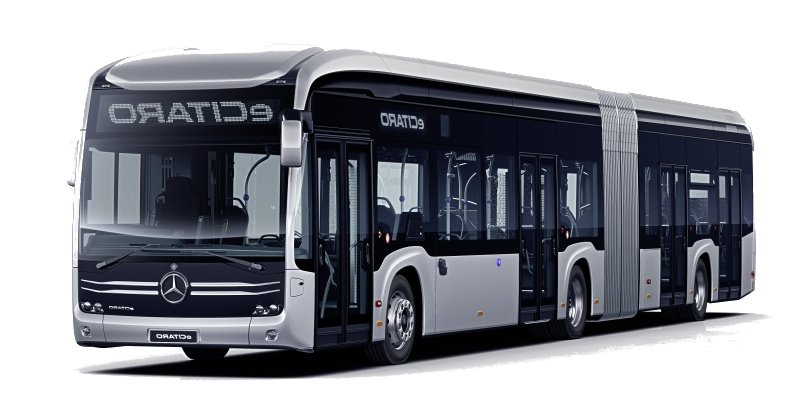
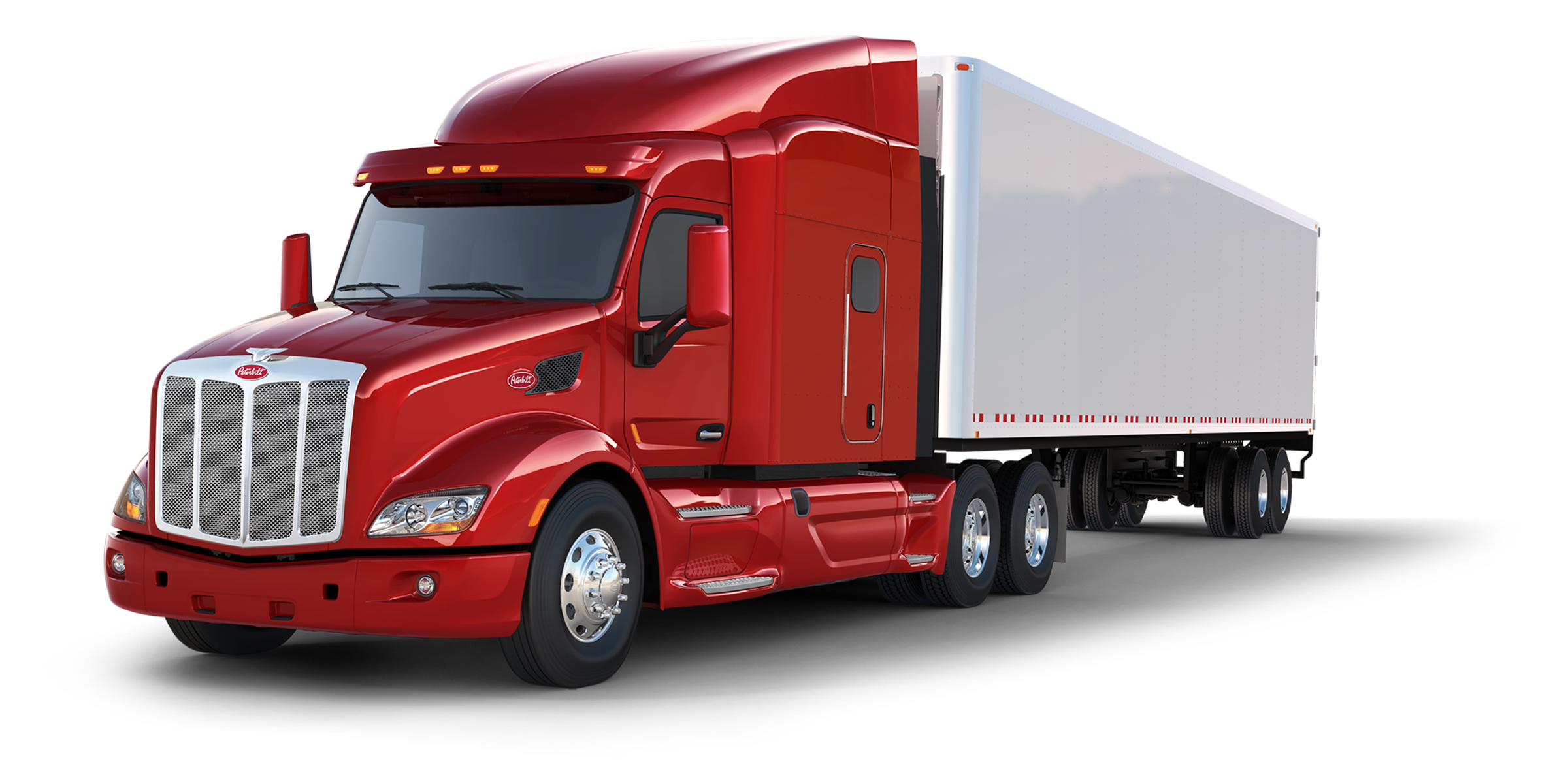 Automobile
Automobile
 ***Technology
***Technology

 Energy resource
Energy resource

 European Union
European Union

 Financial
Financial
 *Brazil economic data
*Brazil economic data

 Financial
Financial
 *China economic data
*China economic data

 Financial
Financial
 *Germany economic data
*Germany economic data

 Financial
Financial
 *European Union economic data
*European Union economic data

 Financial
Financial
 *France economic data
*France economic data

 Financial
Financial
 *India economic data
*India economic data

 Financial
Financial
 *Indonesia economic data
*Indonesia economic data

 Financial
Financial
 *Italy economic data
*Italy economic data

 Financial
Financial
 *Japan economic data
*Japan economic data

 Financial
Financial
 *Canada economic data
*Canada economic data

 Financial
Financial
 *Russia economic data
*Russia economic data

 Financial
Financial
 *United States economic data
*United States economic data

 Financial
Financial
 *United Kingdom economic data
*United Kingdom economic data

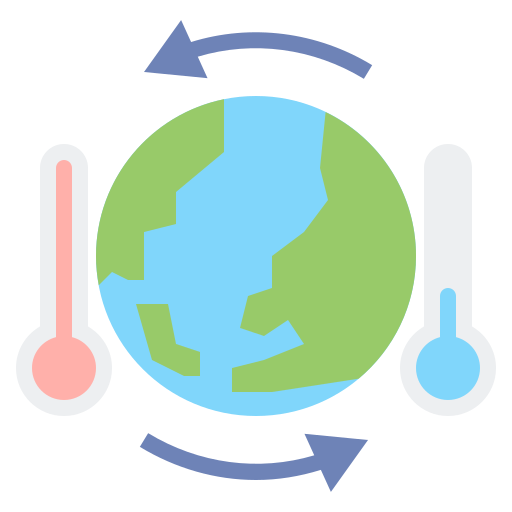 Climate
Climate



 Aerospace
Aerospace

 Party and government
Party and government

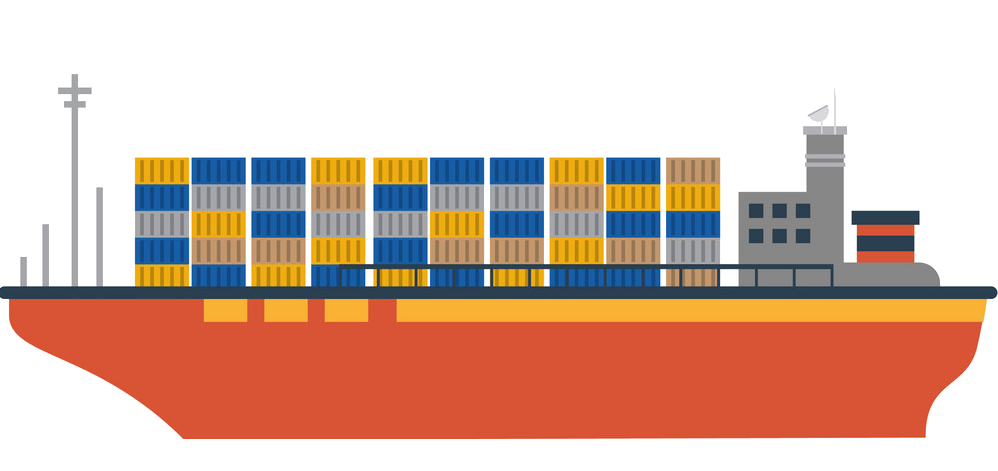 Ships and Nautics
Ships and Nautics
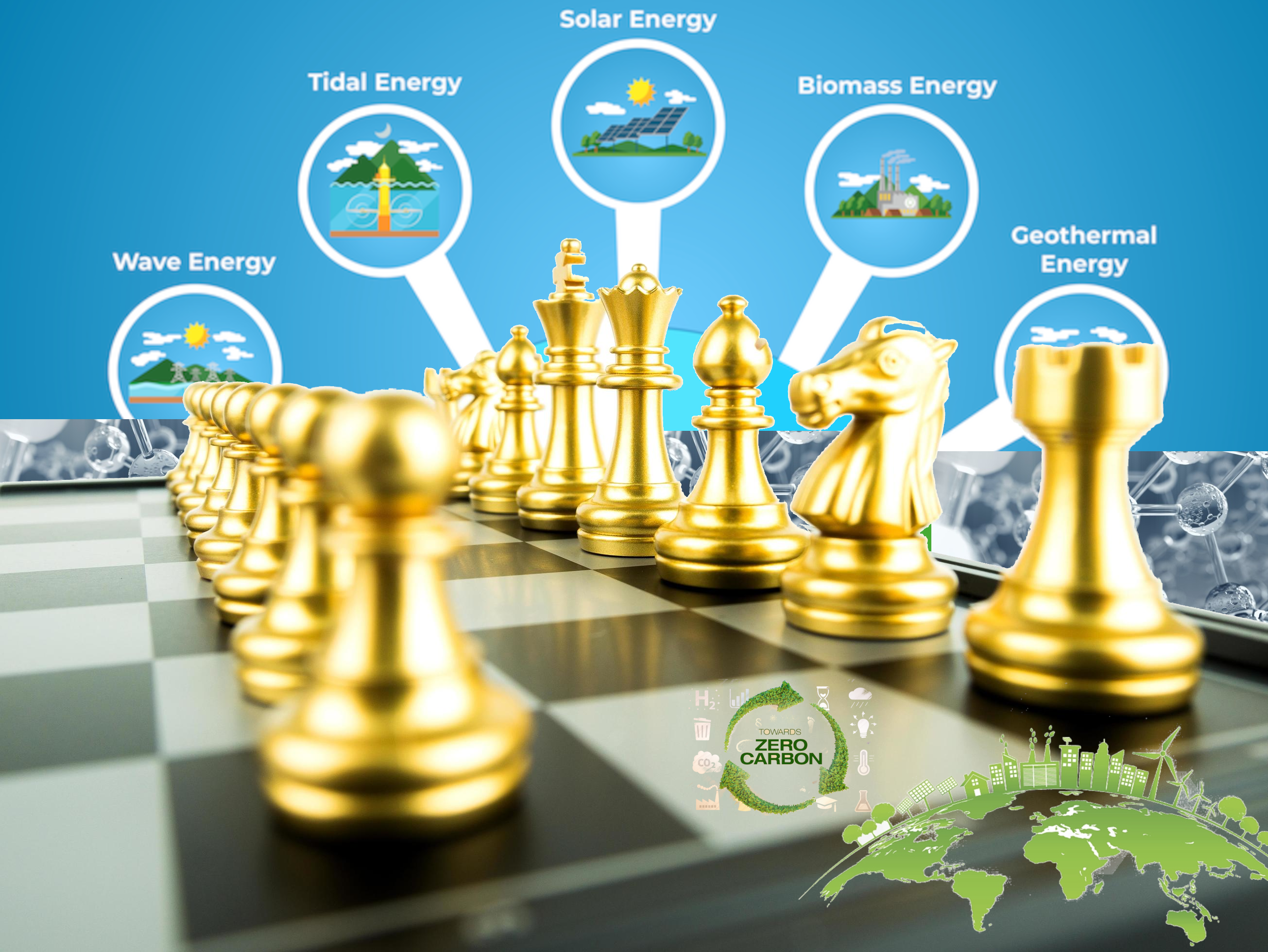

 IT-Times
IT-Times
 Geography
Geography
